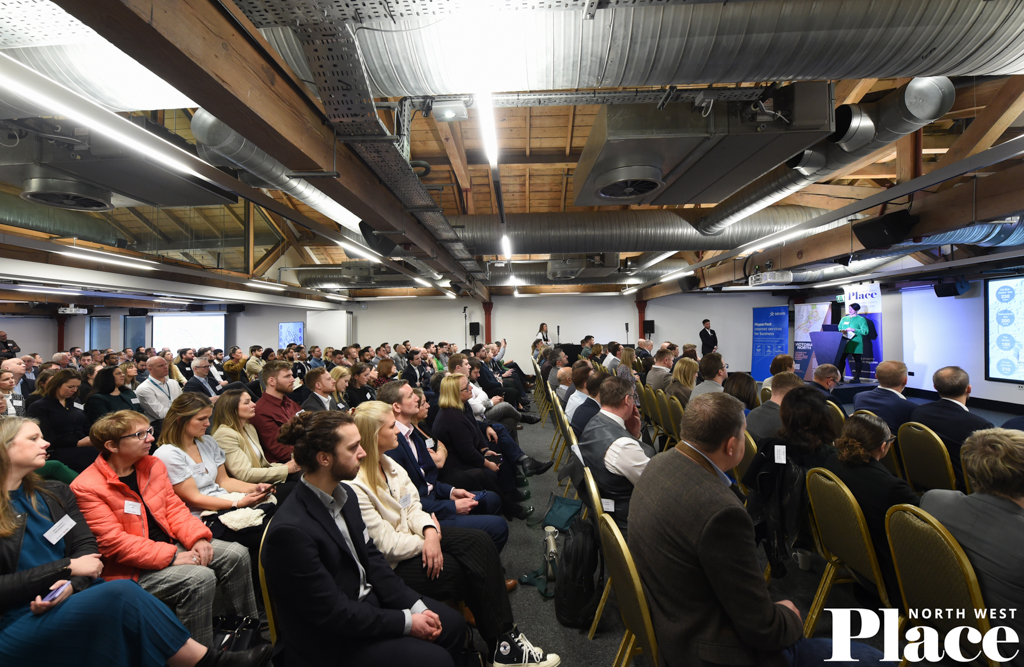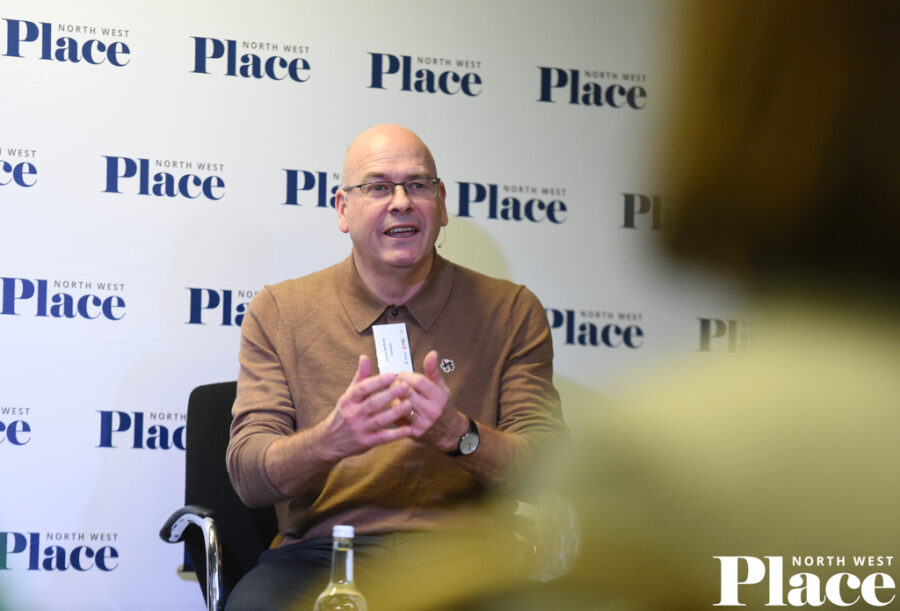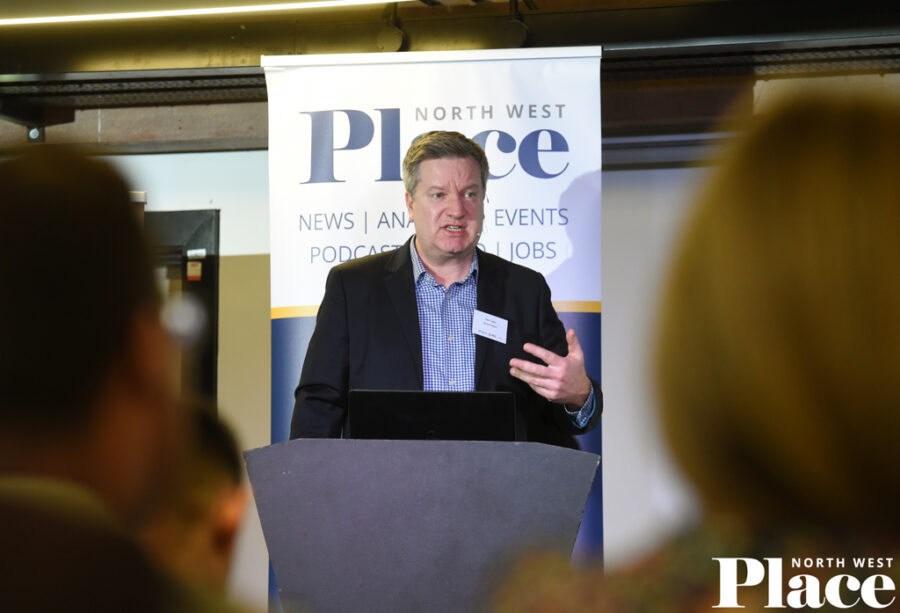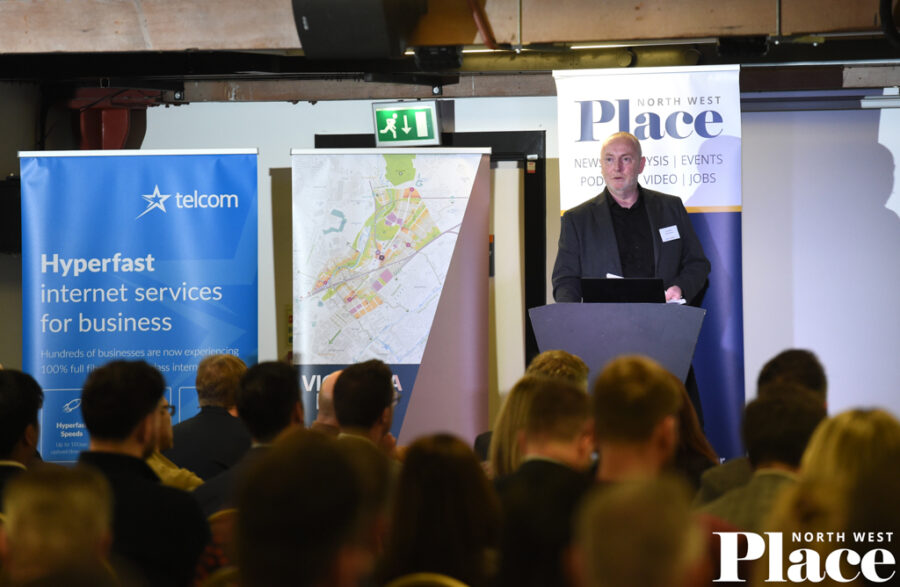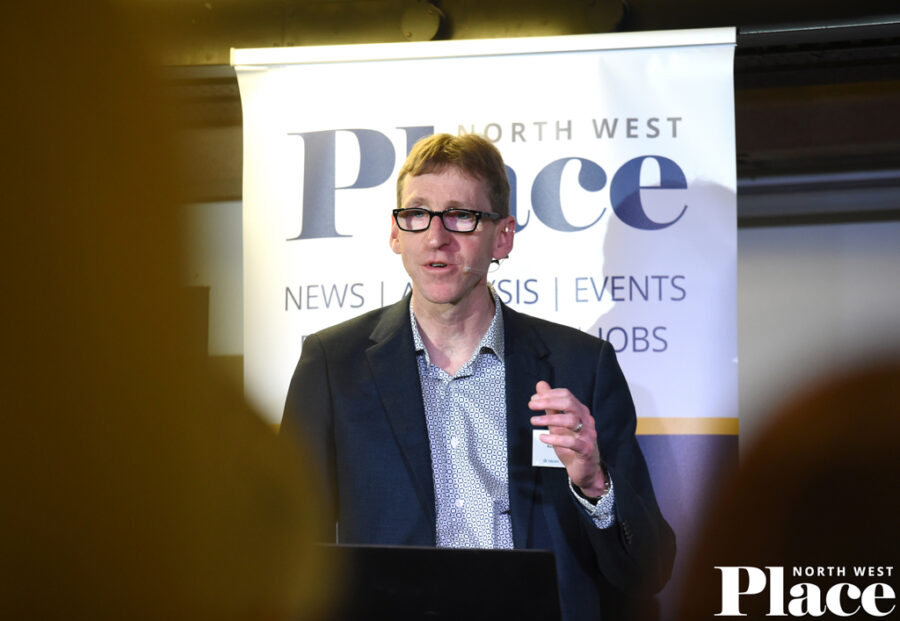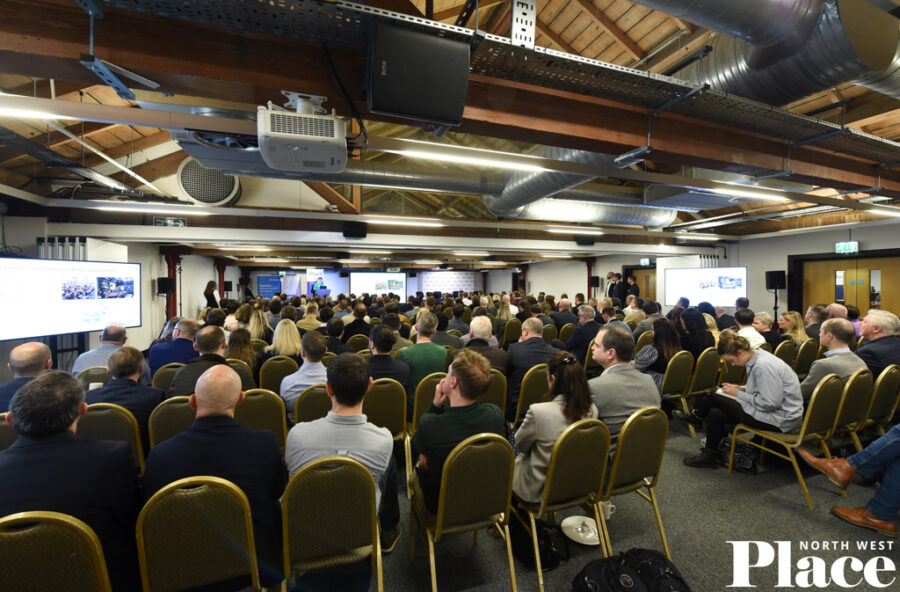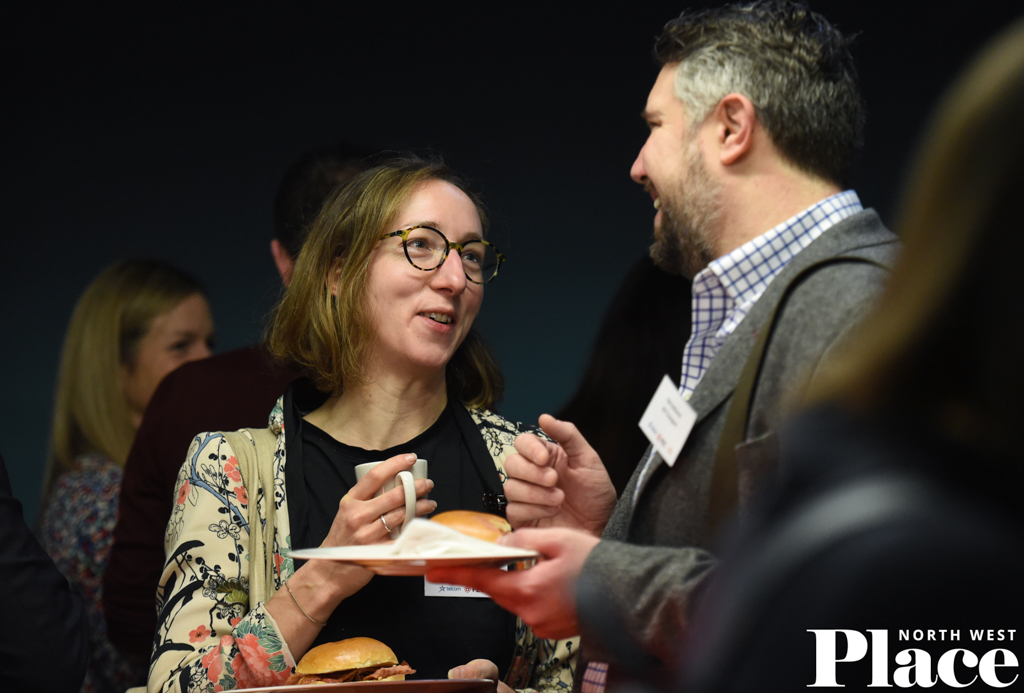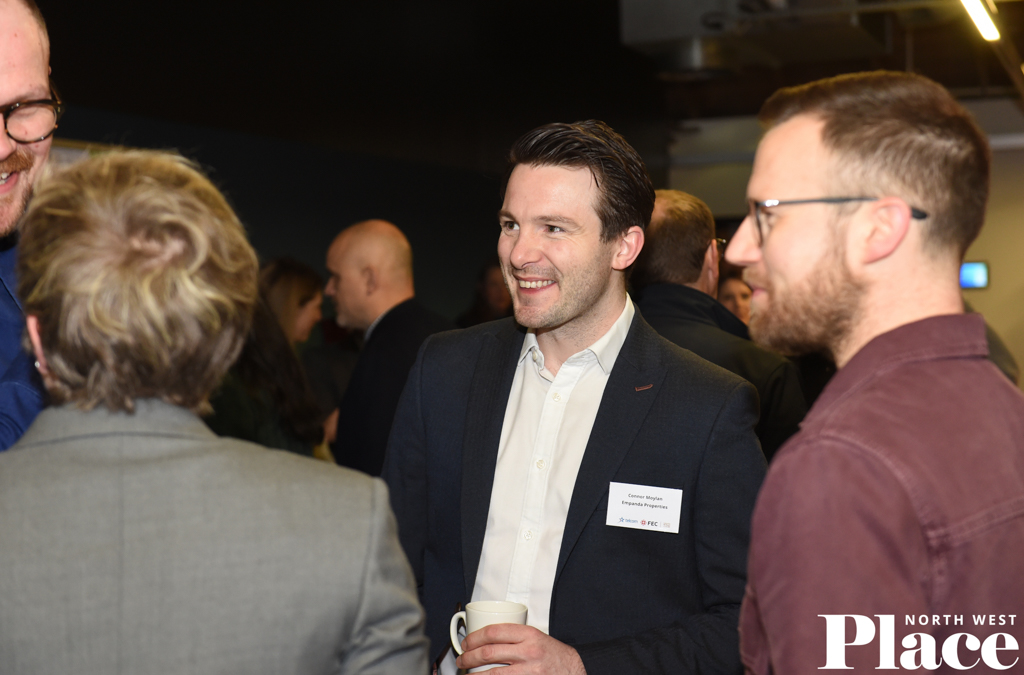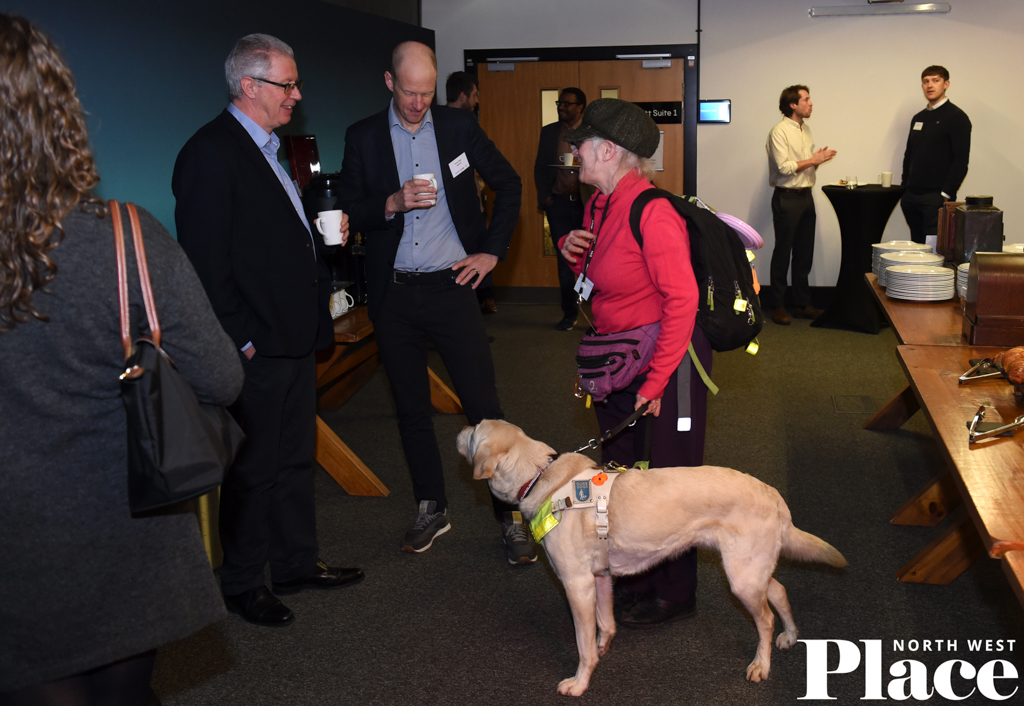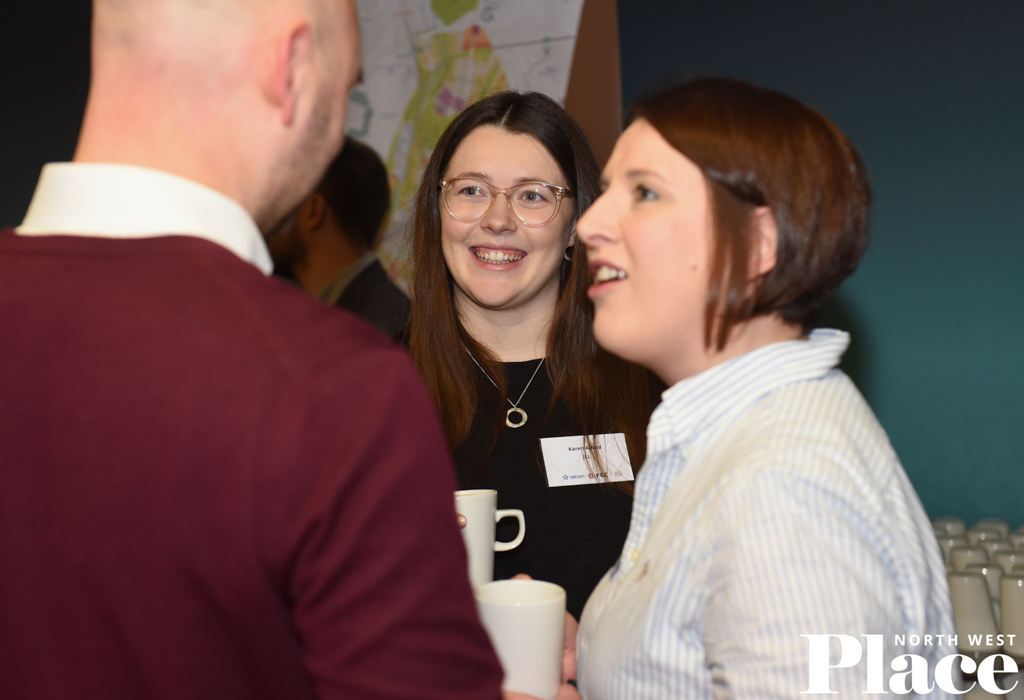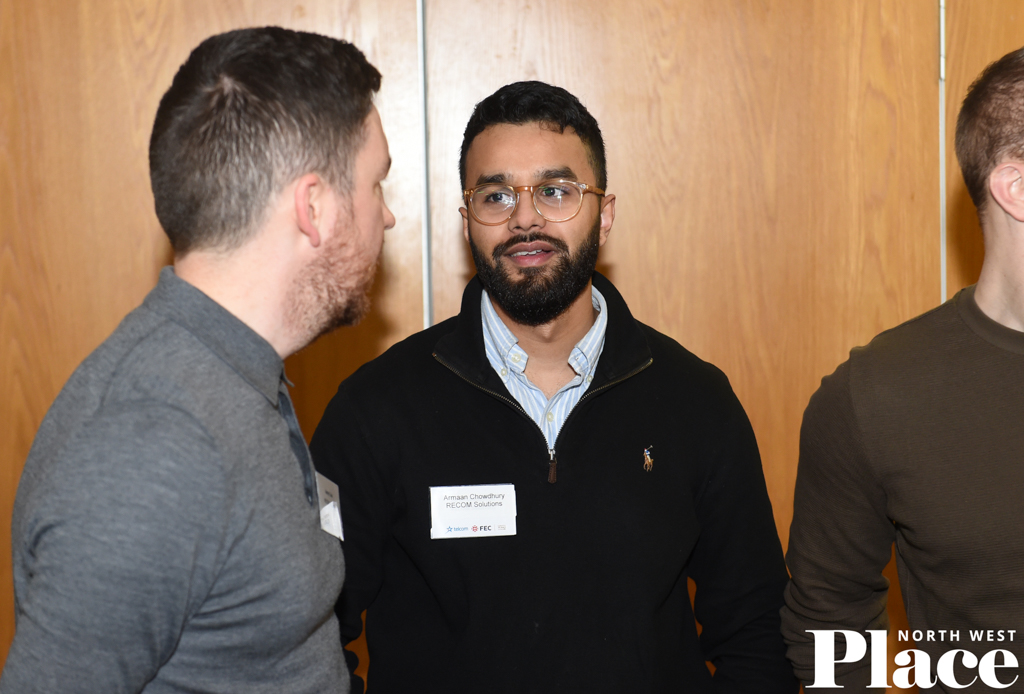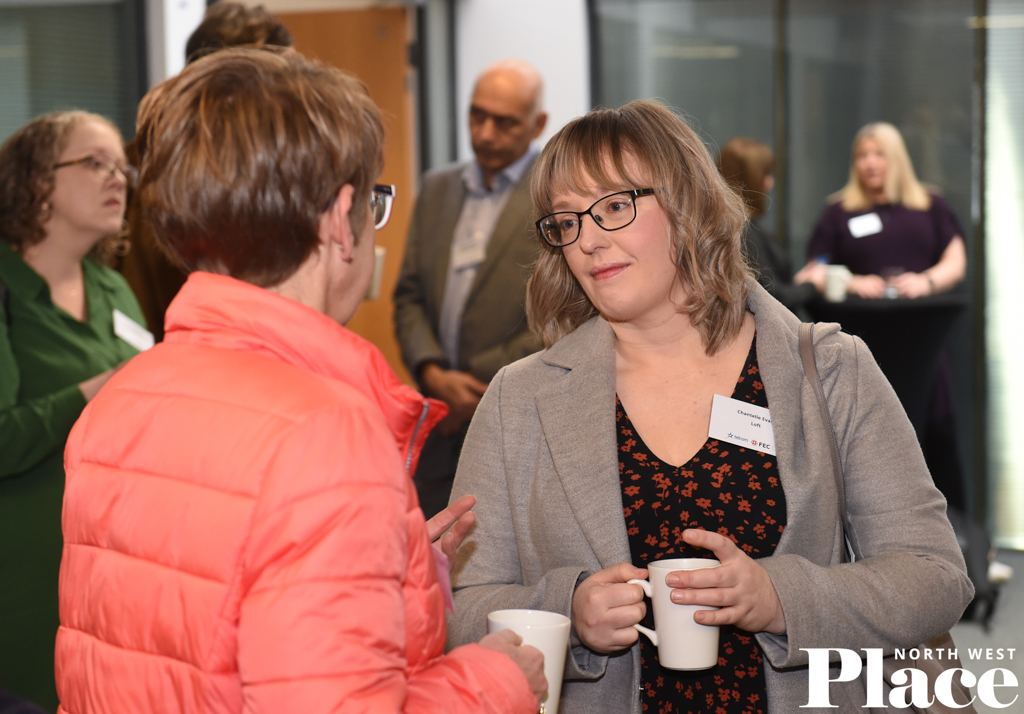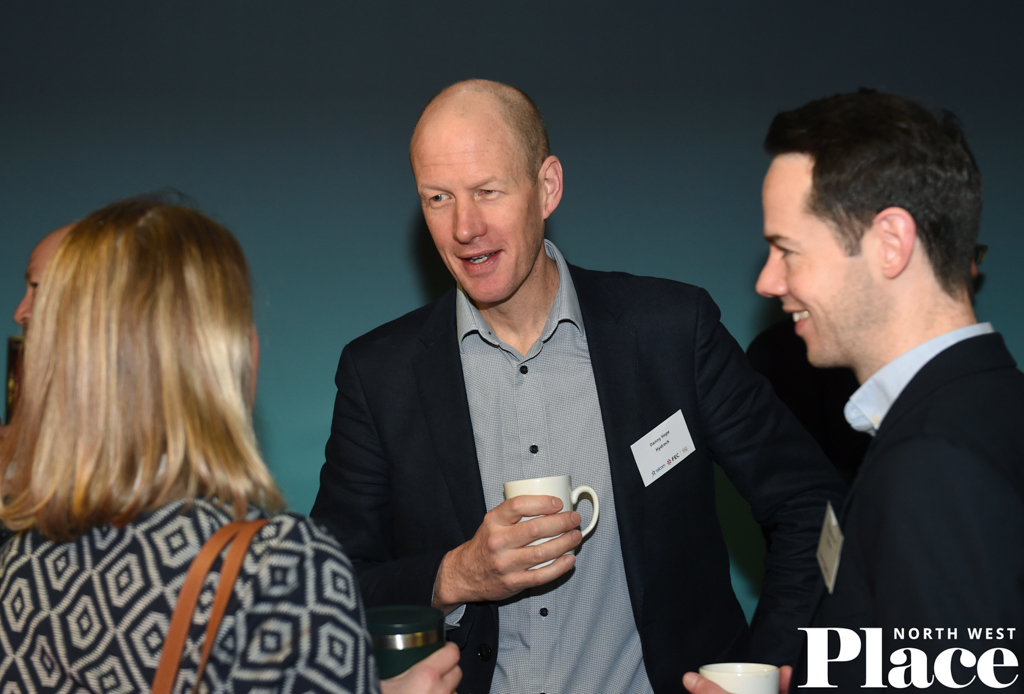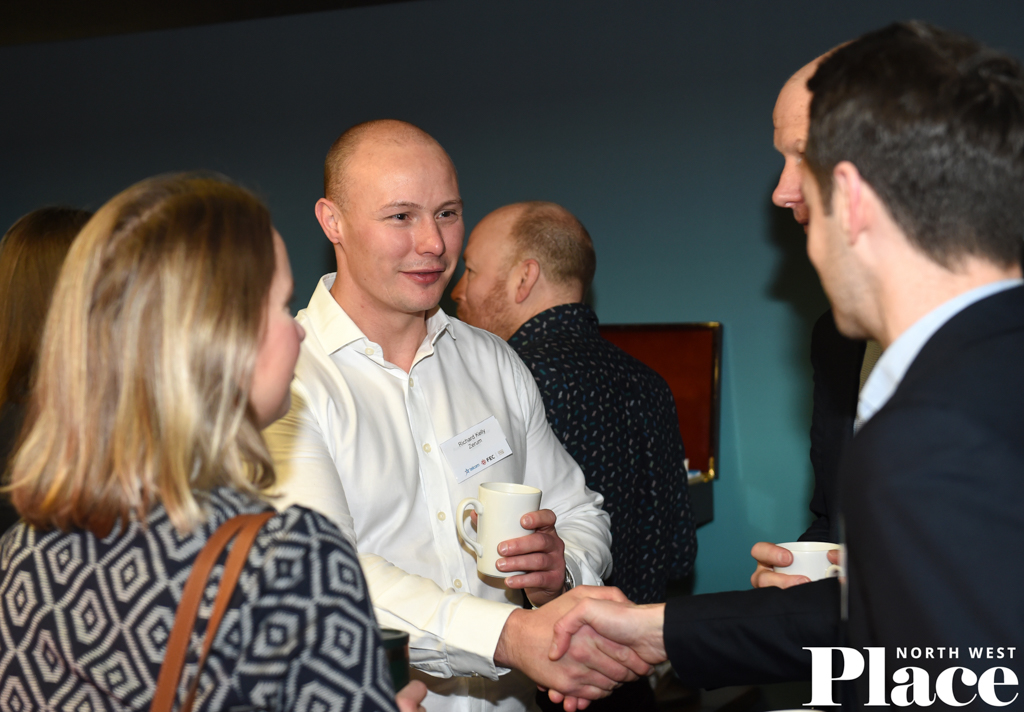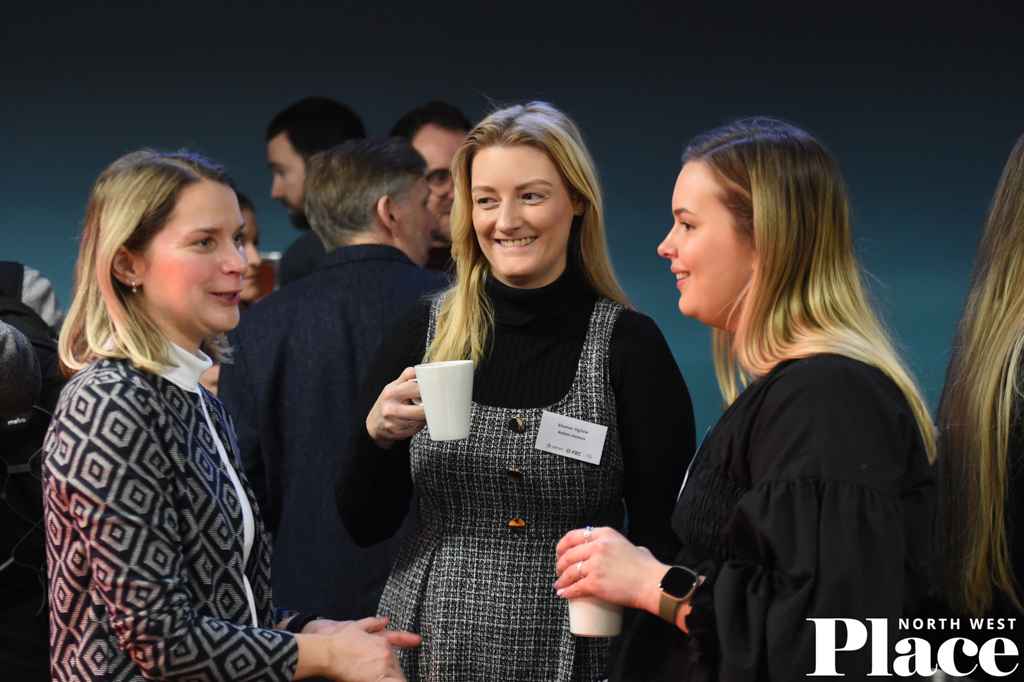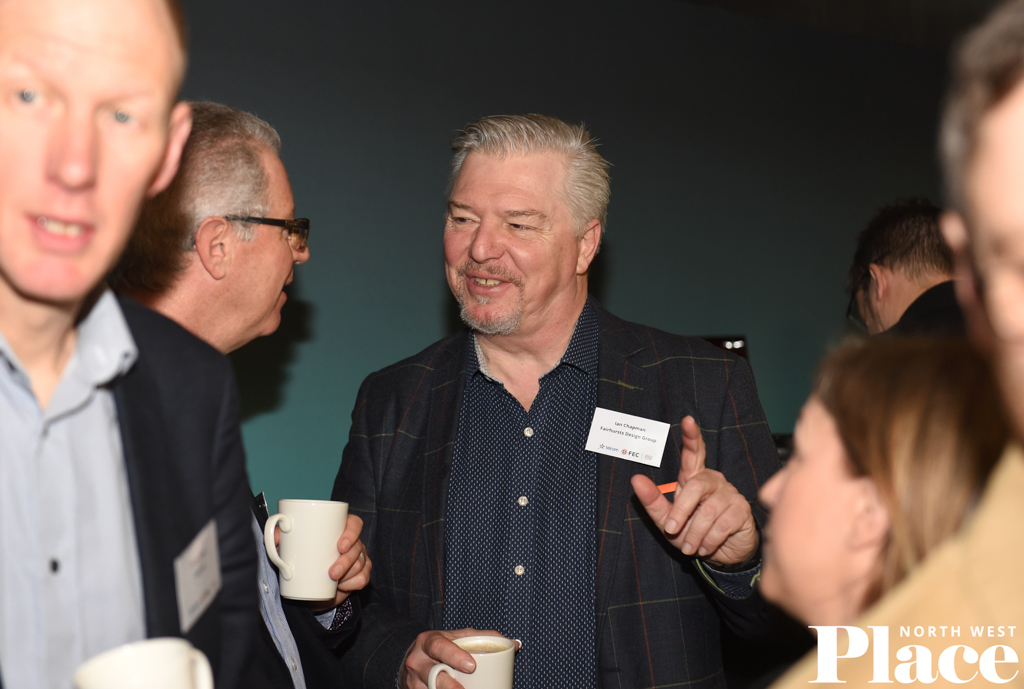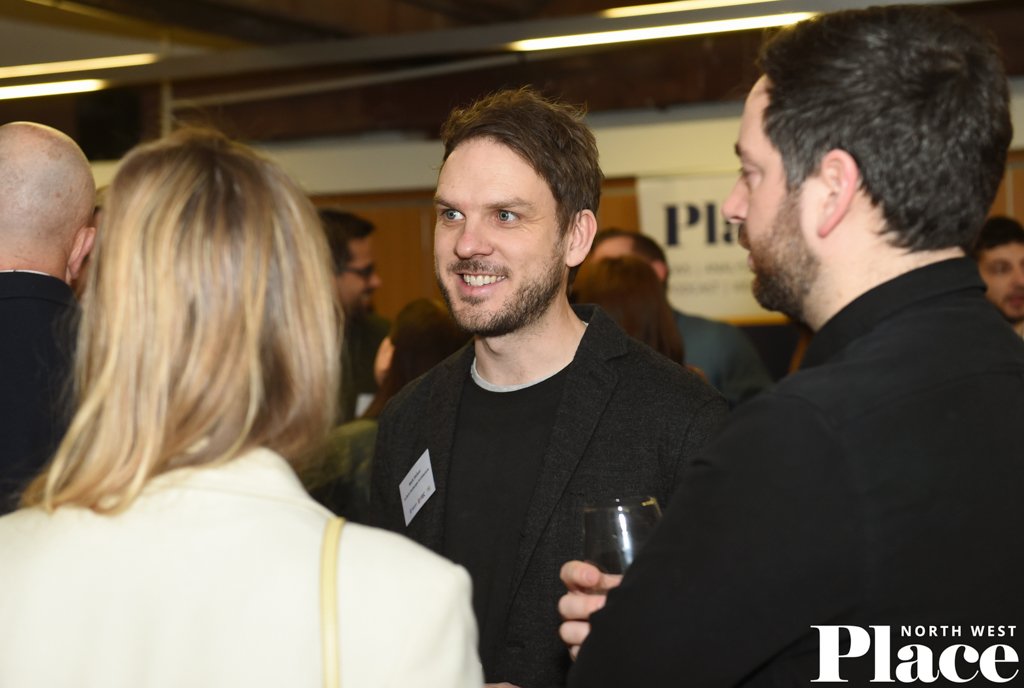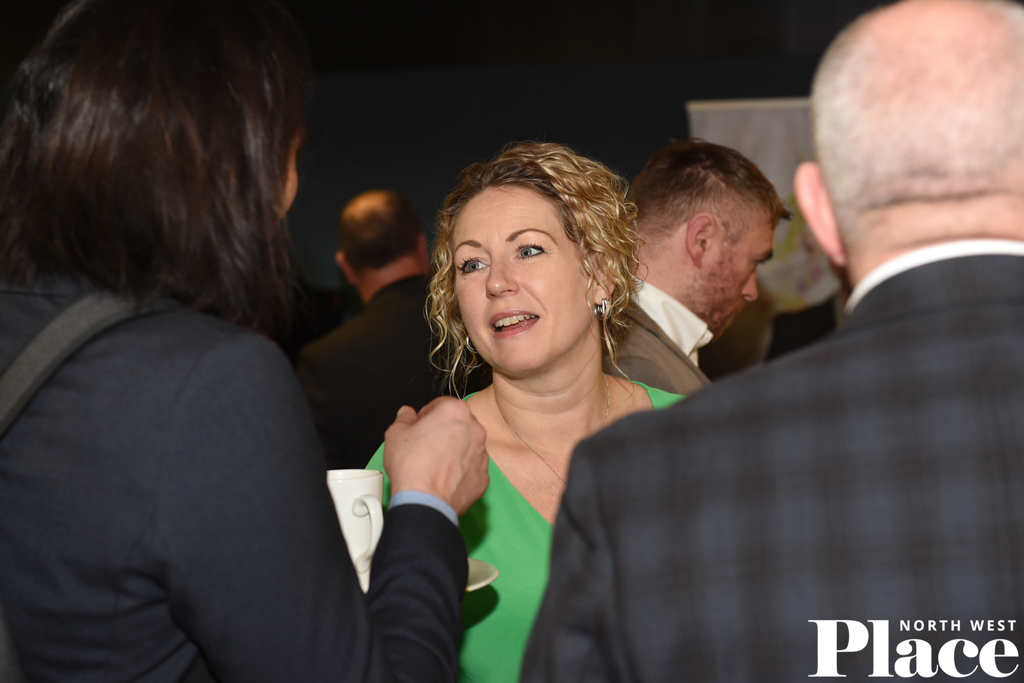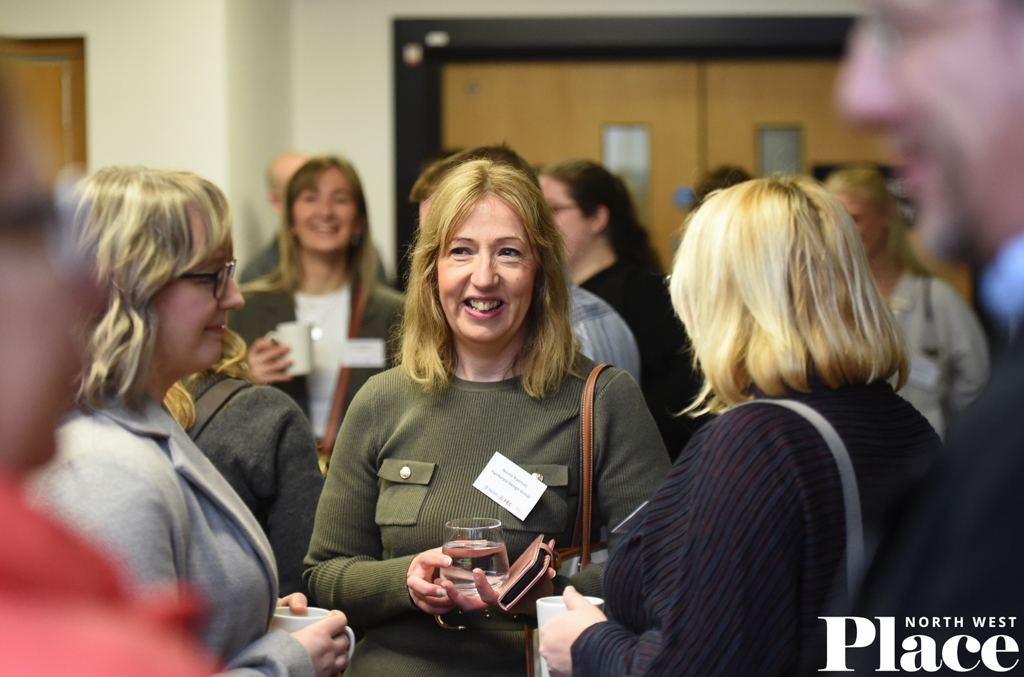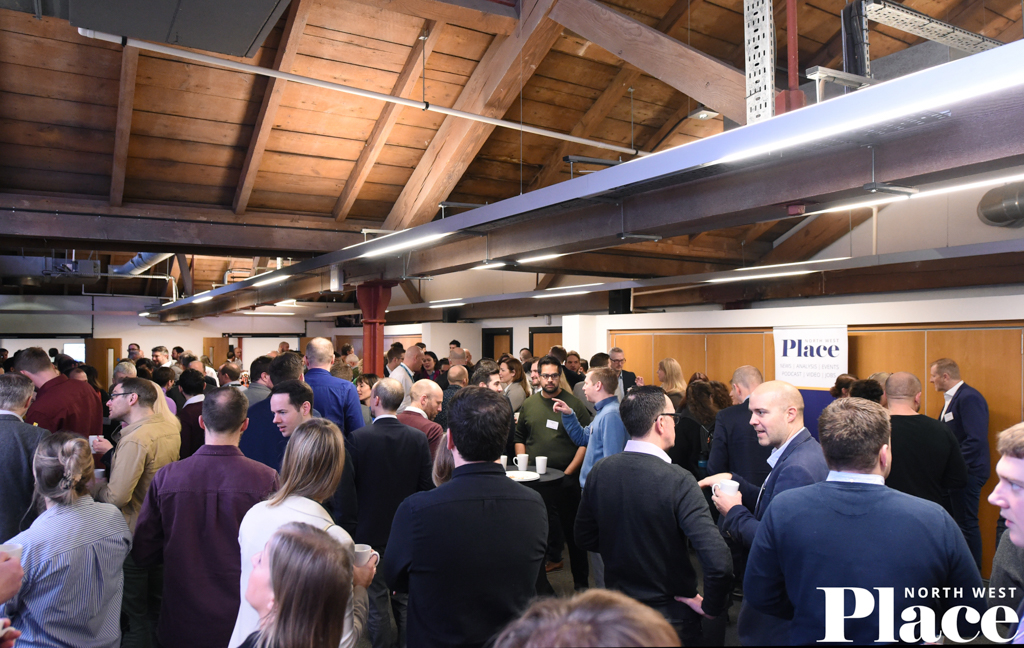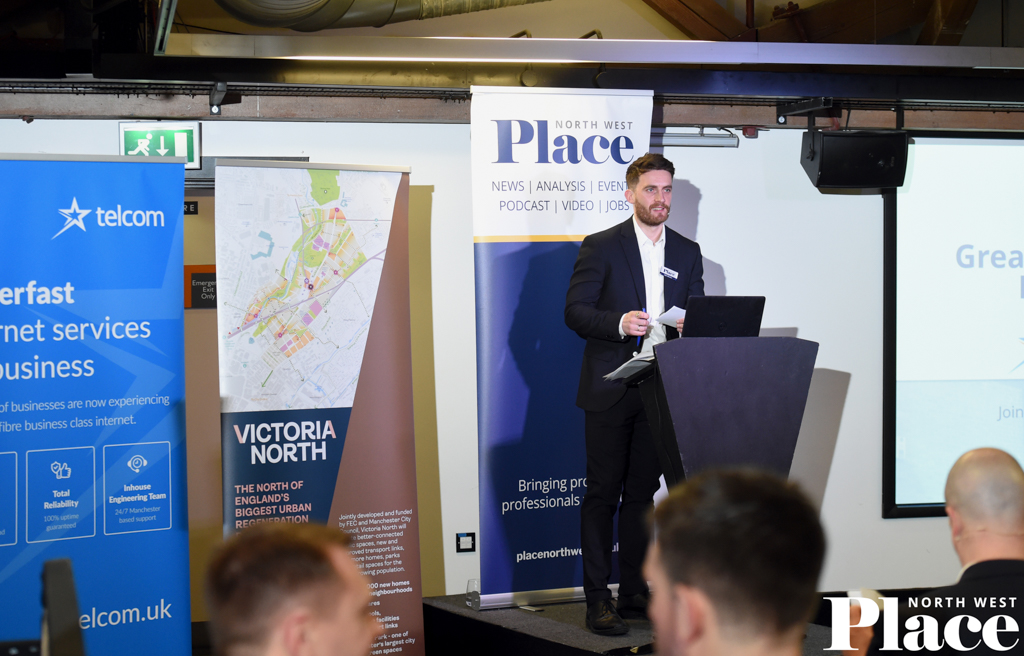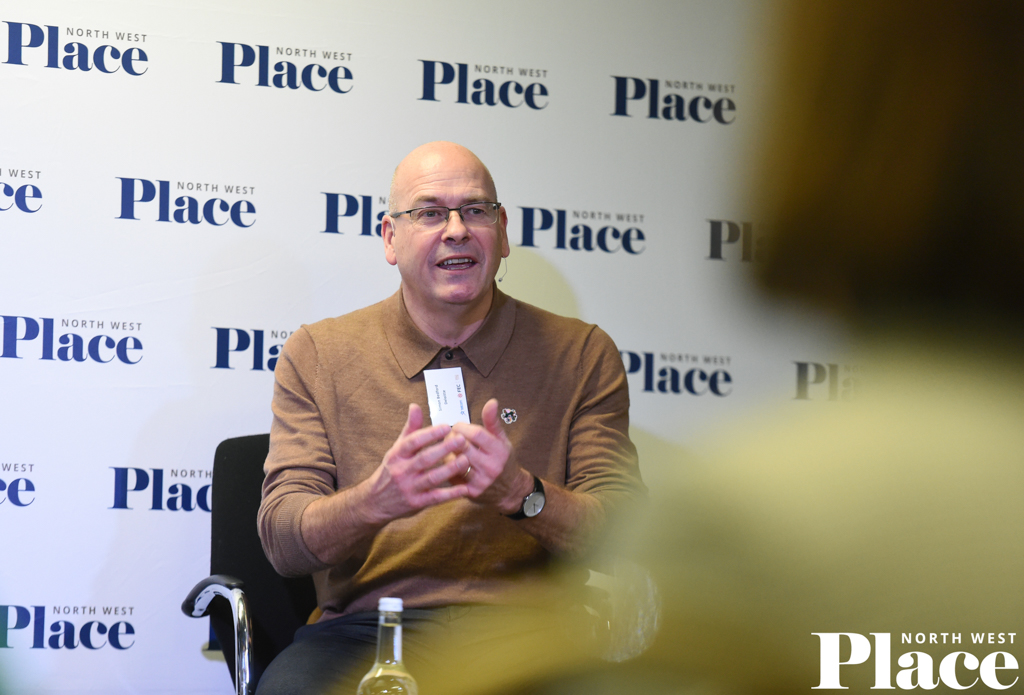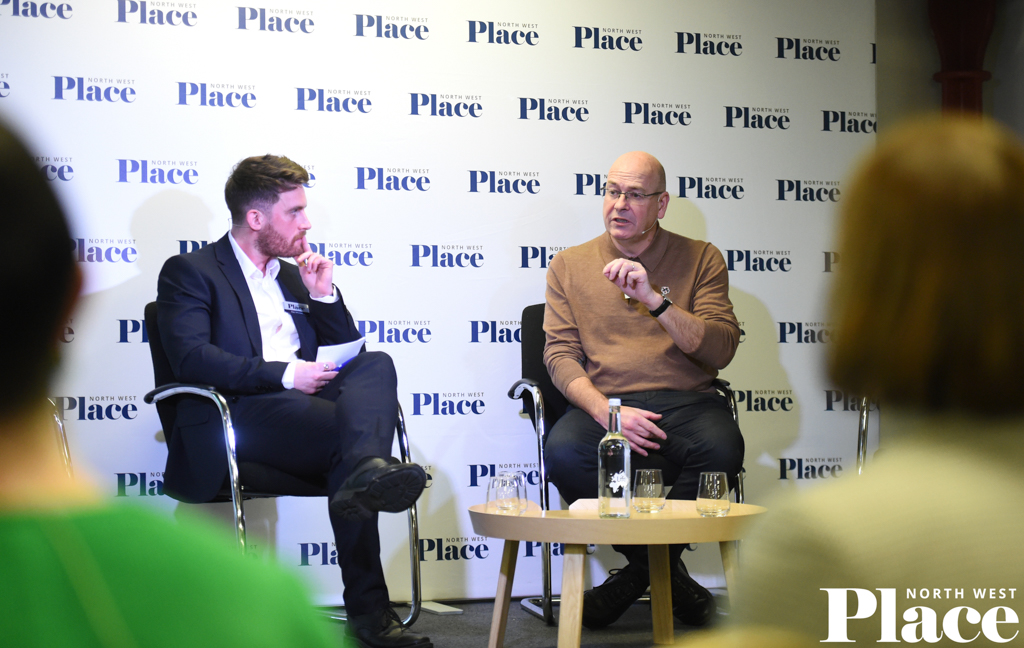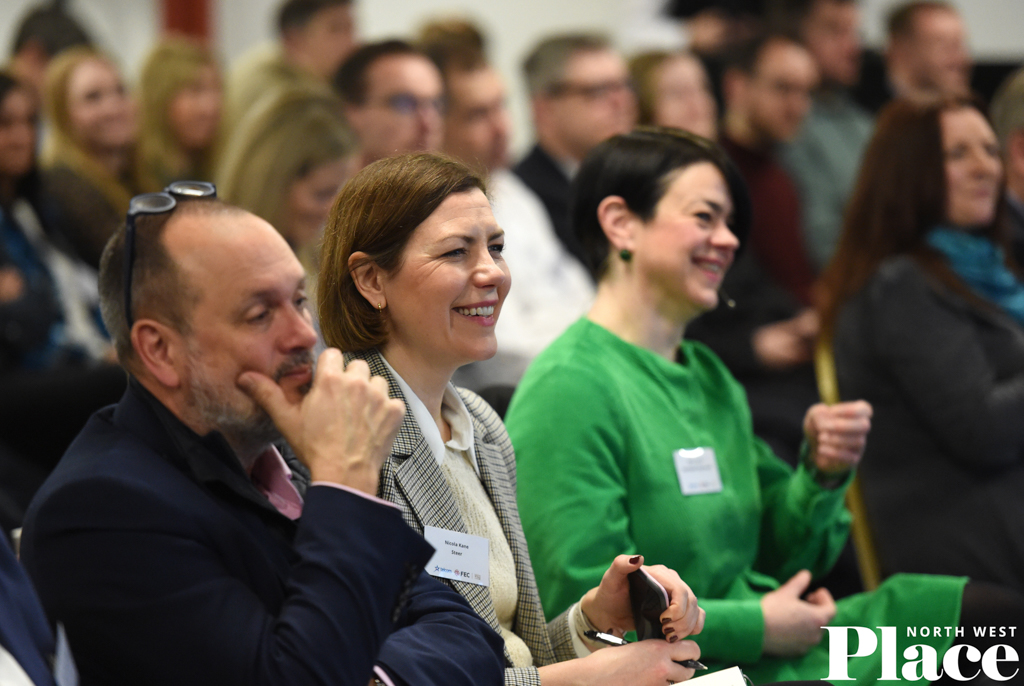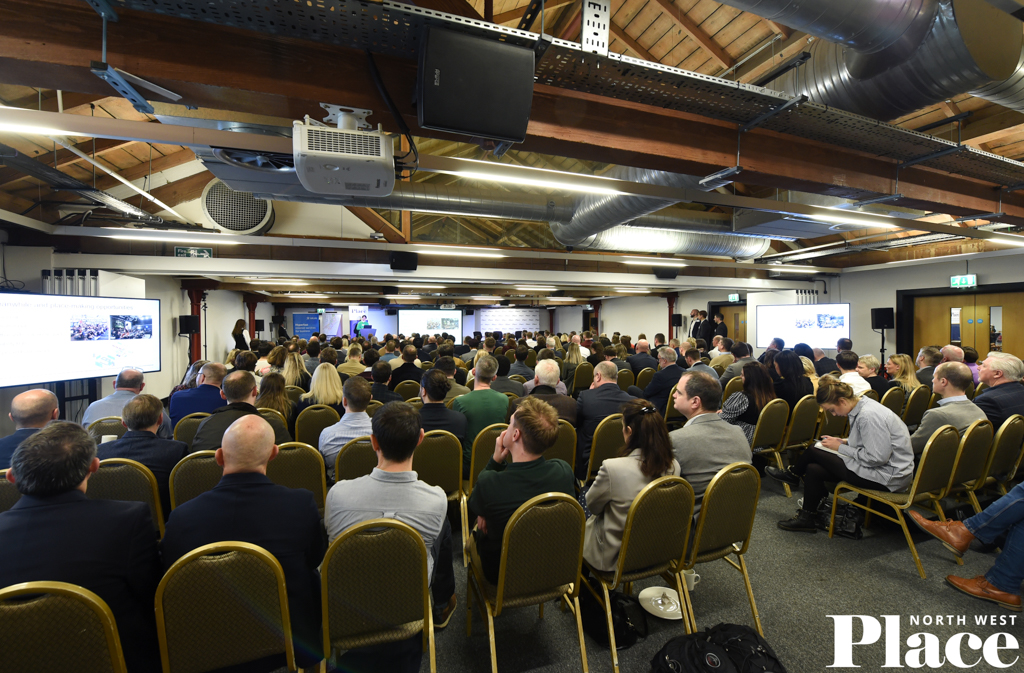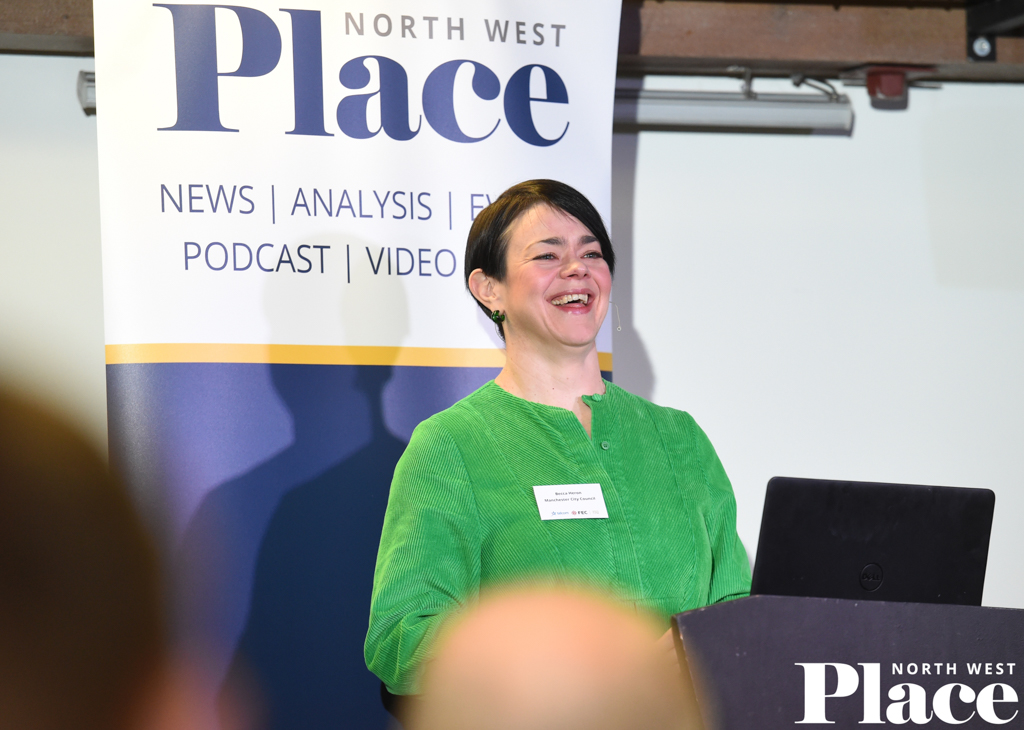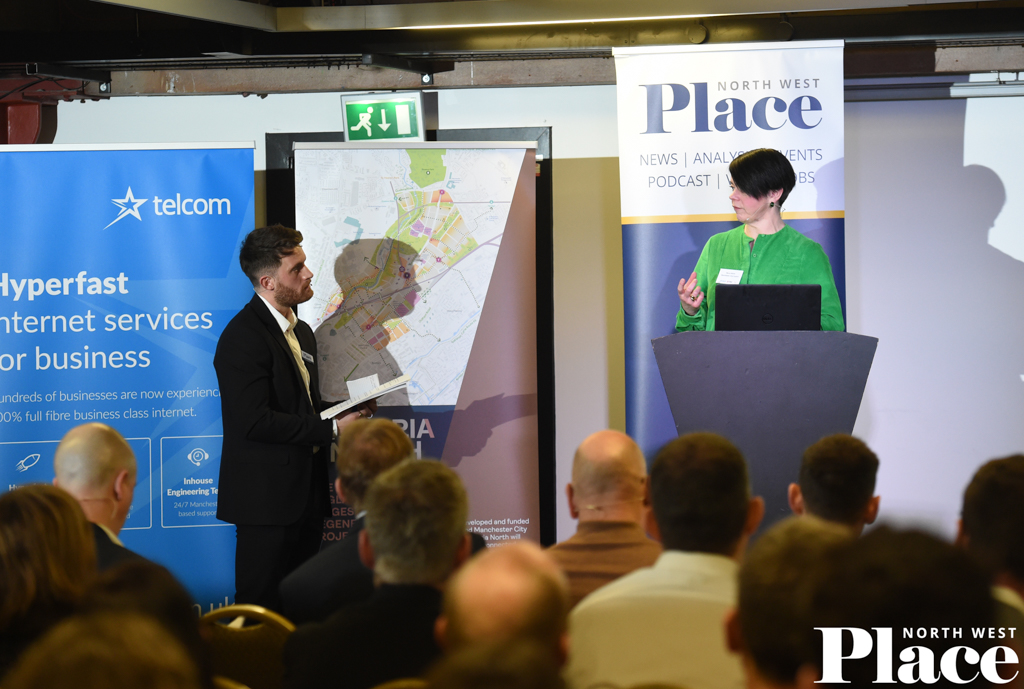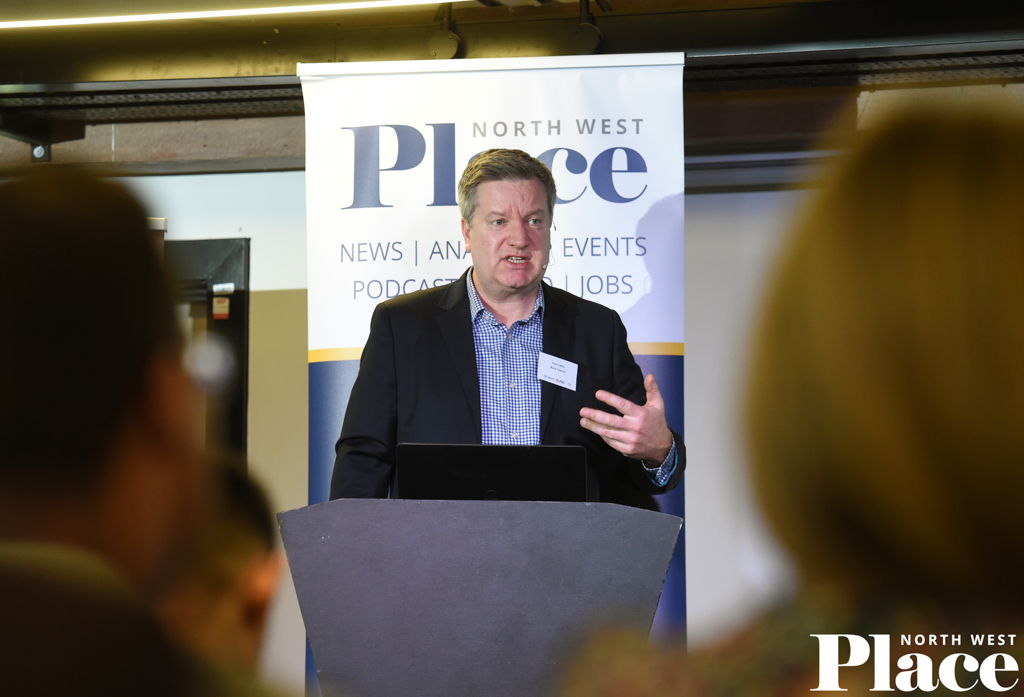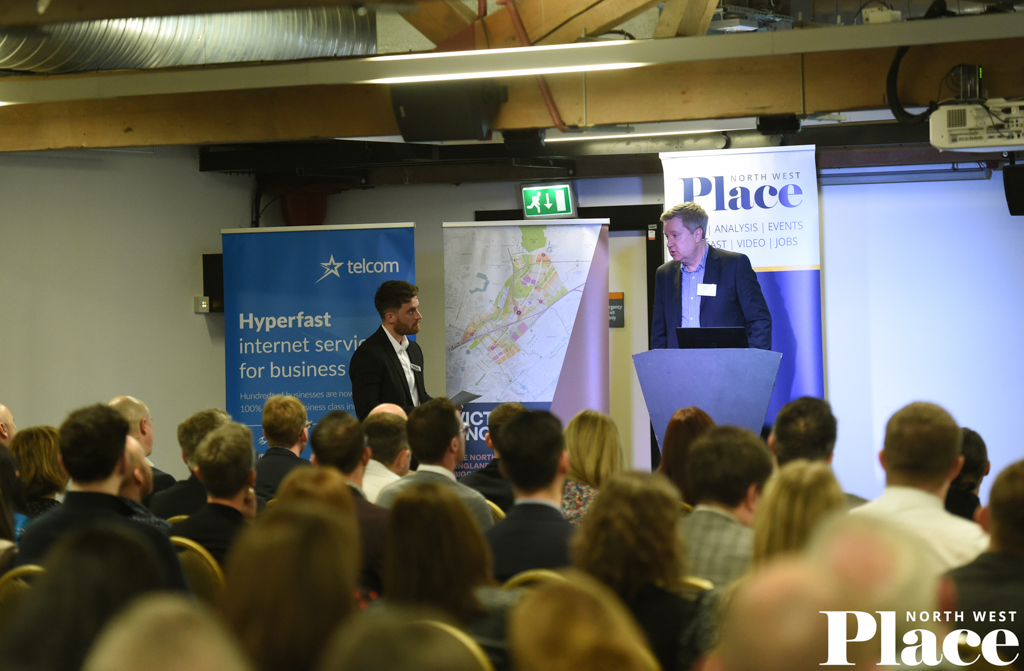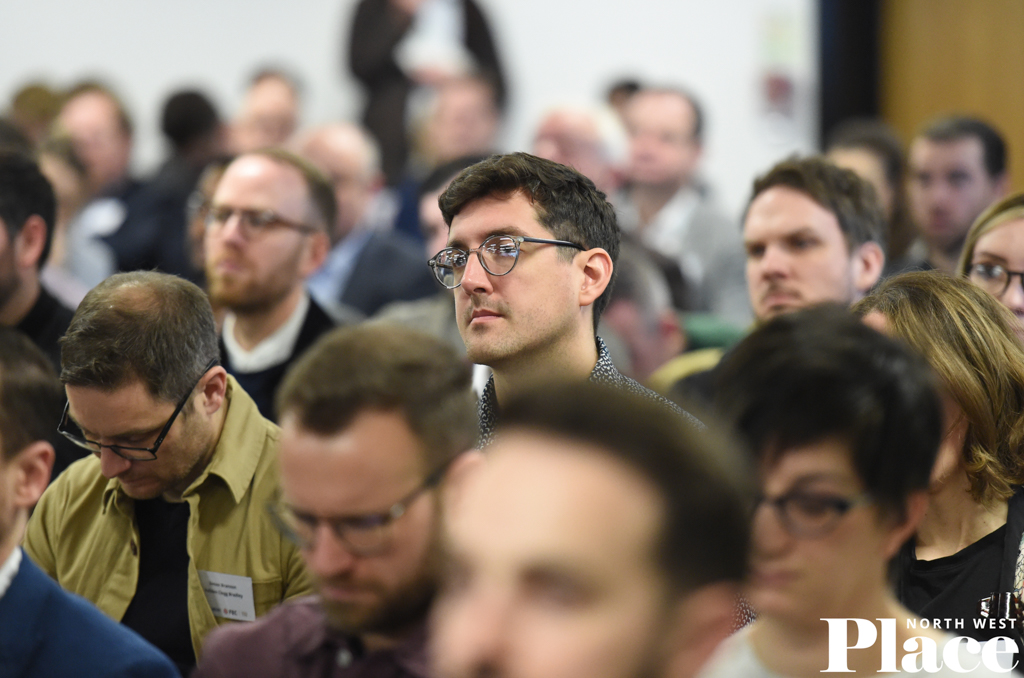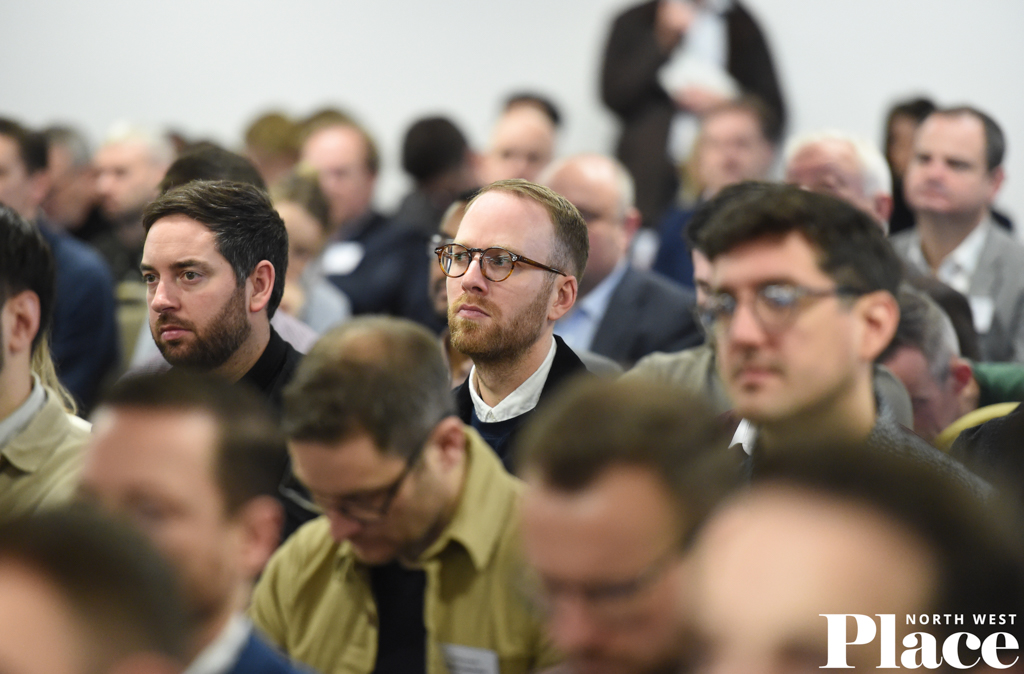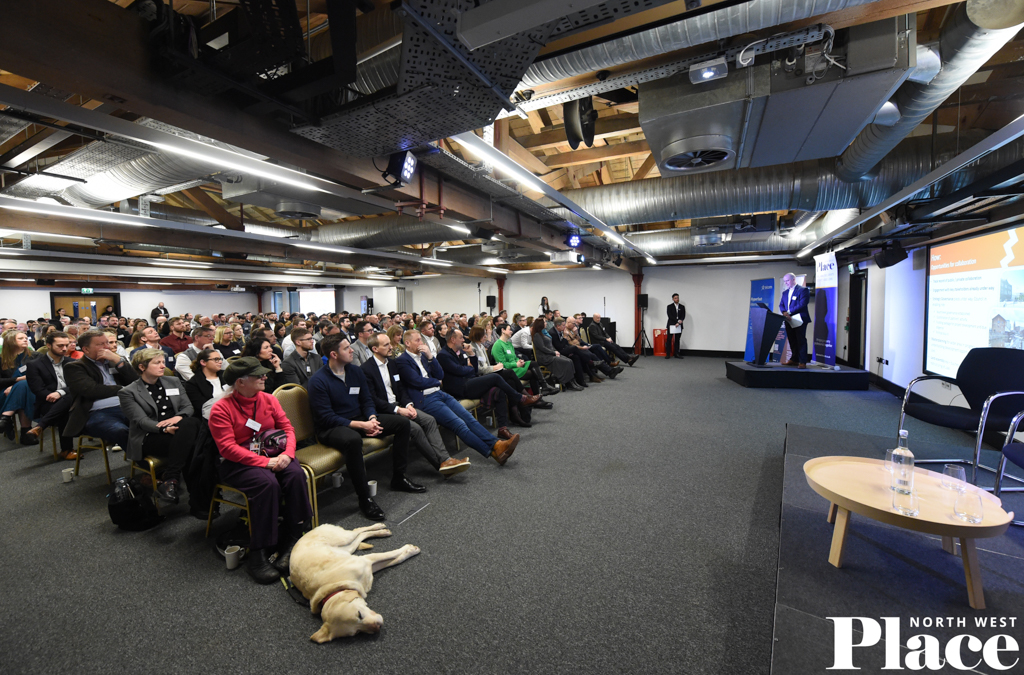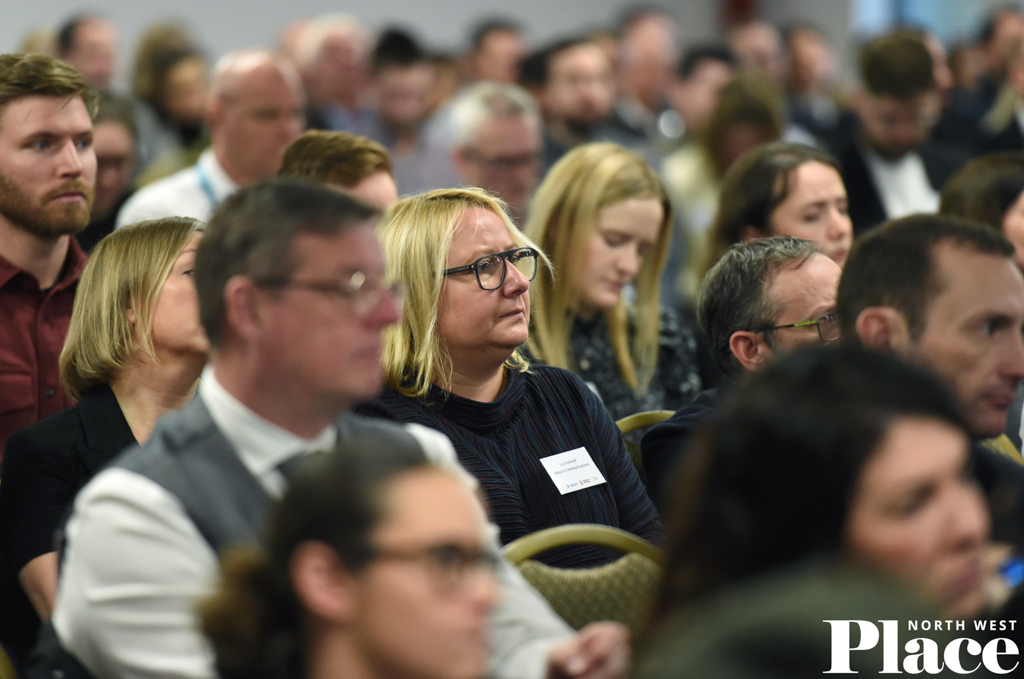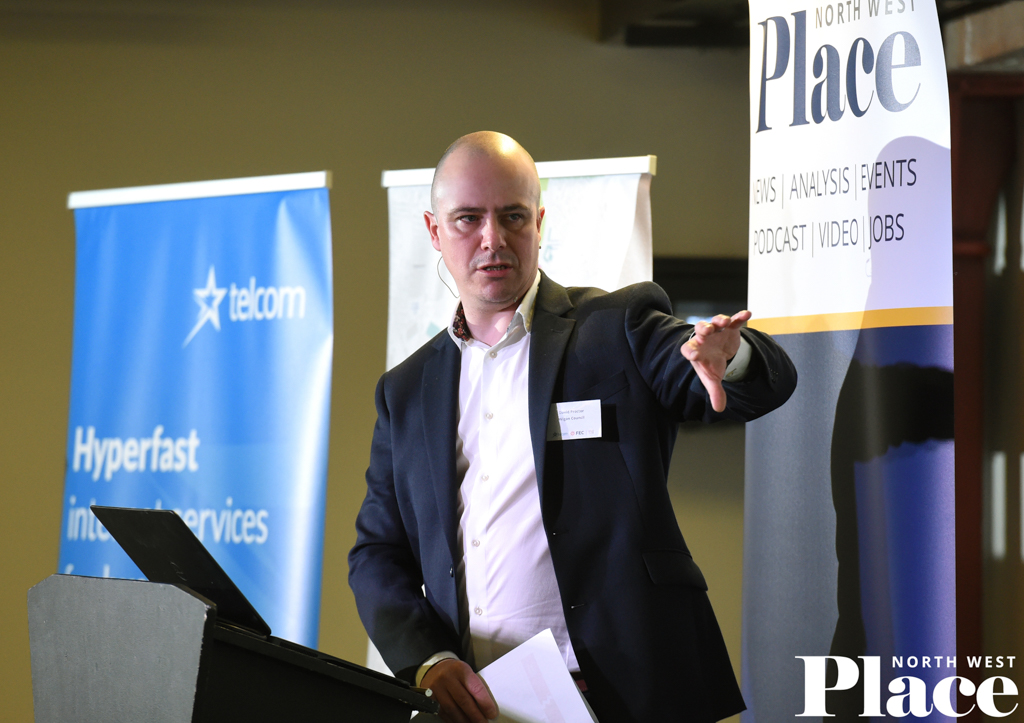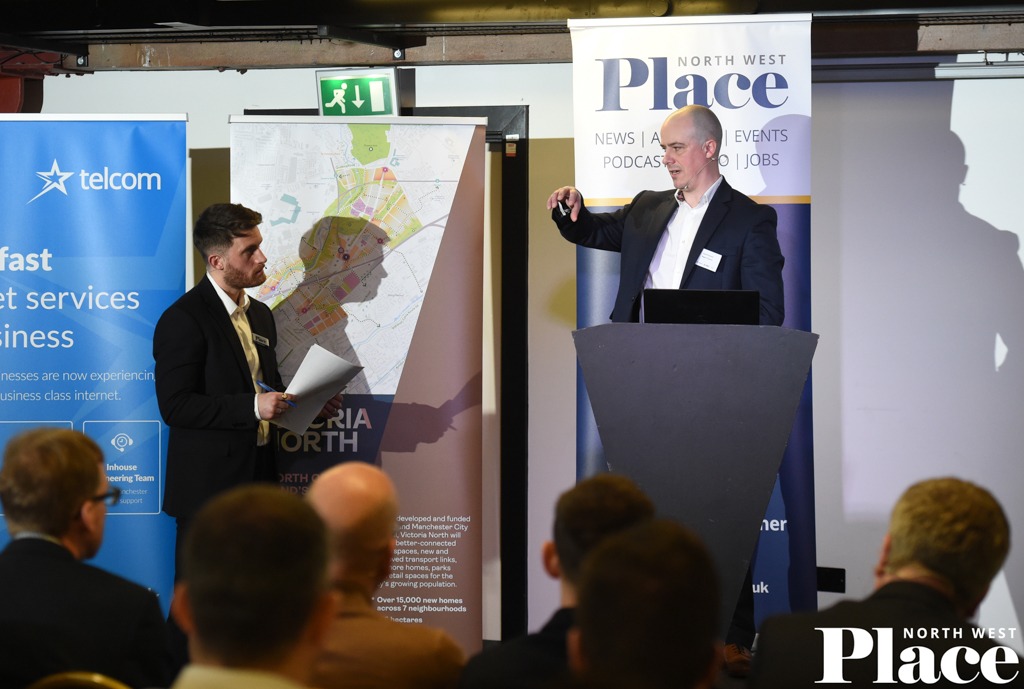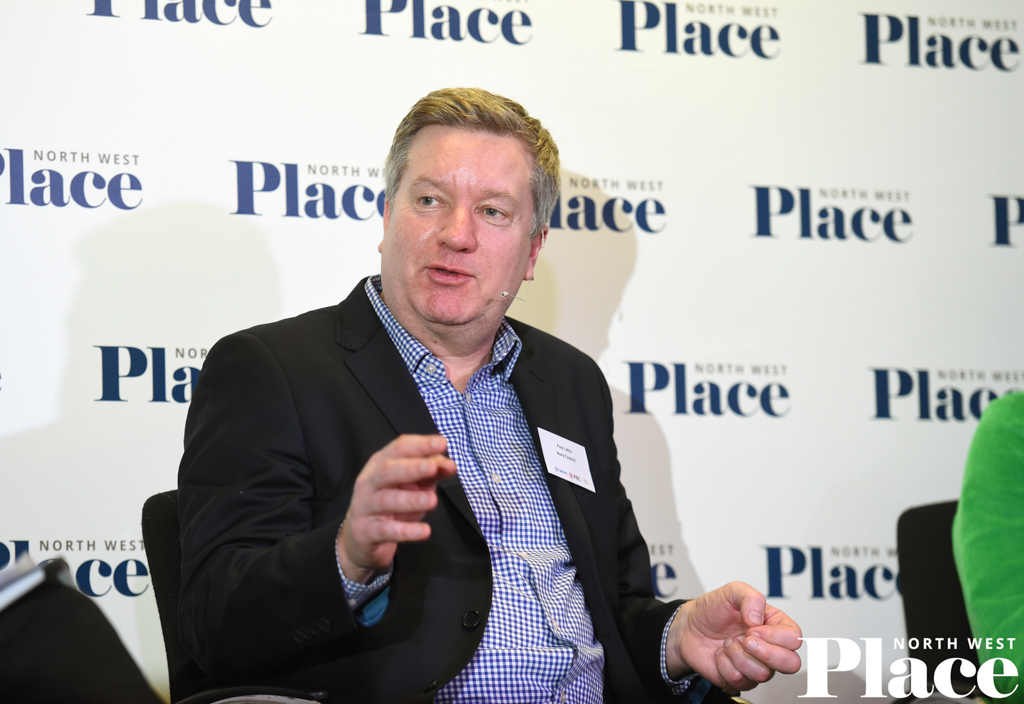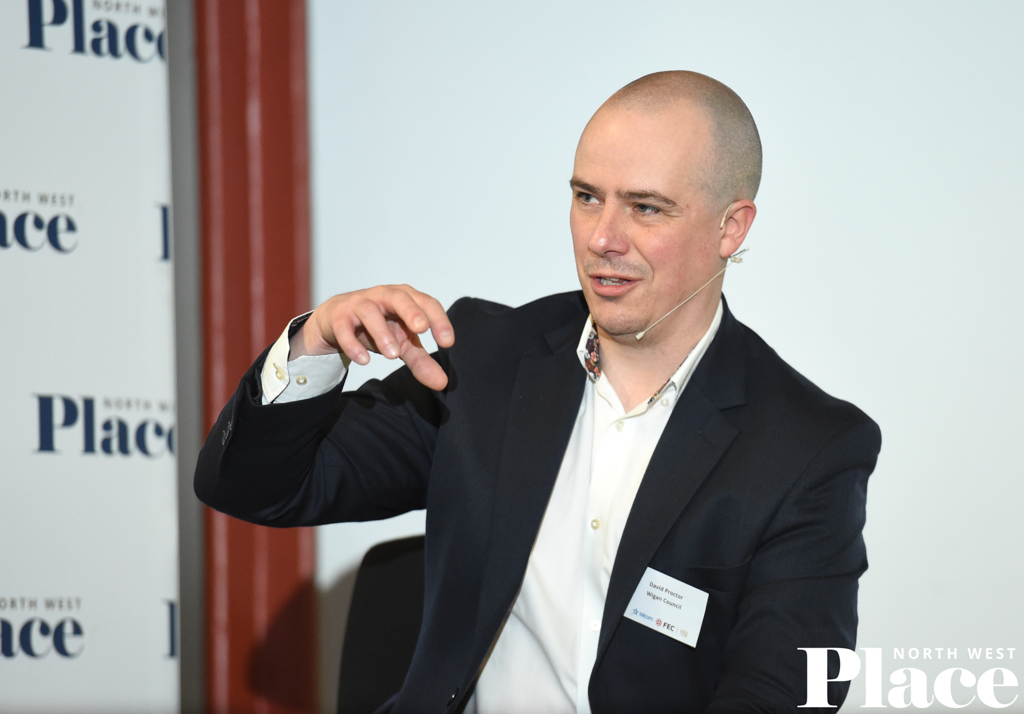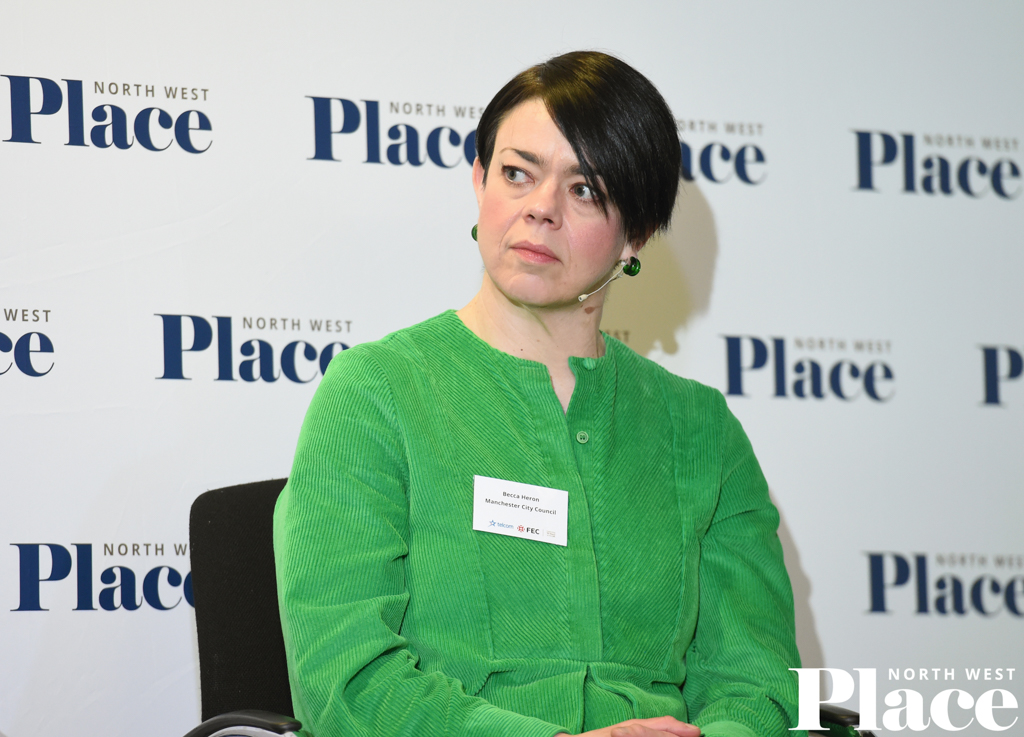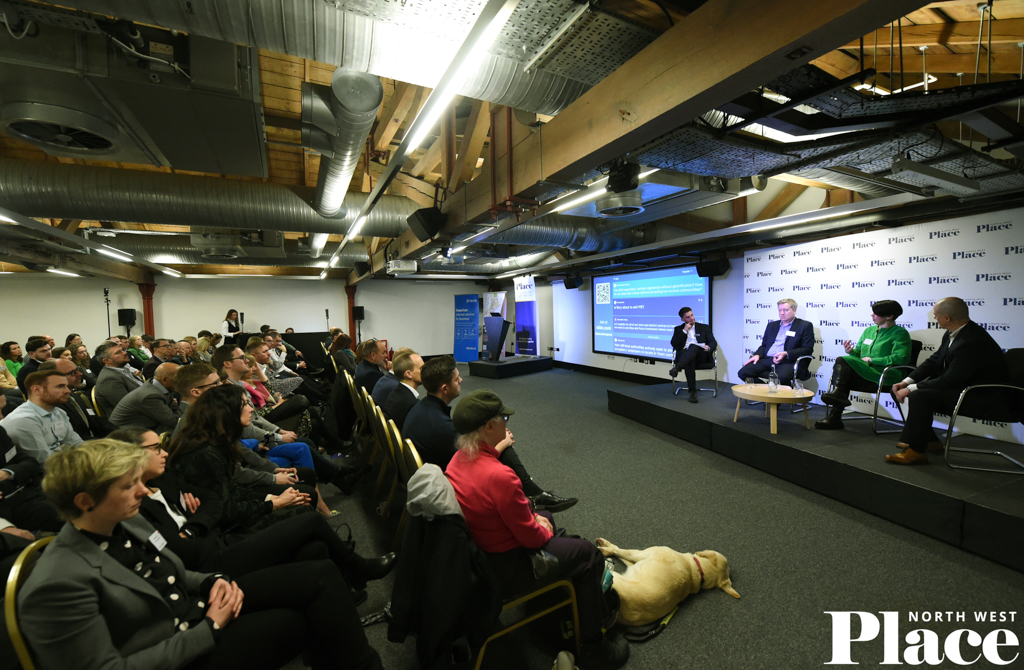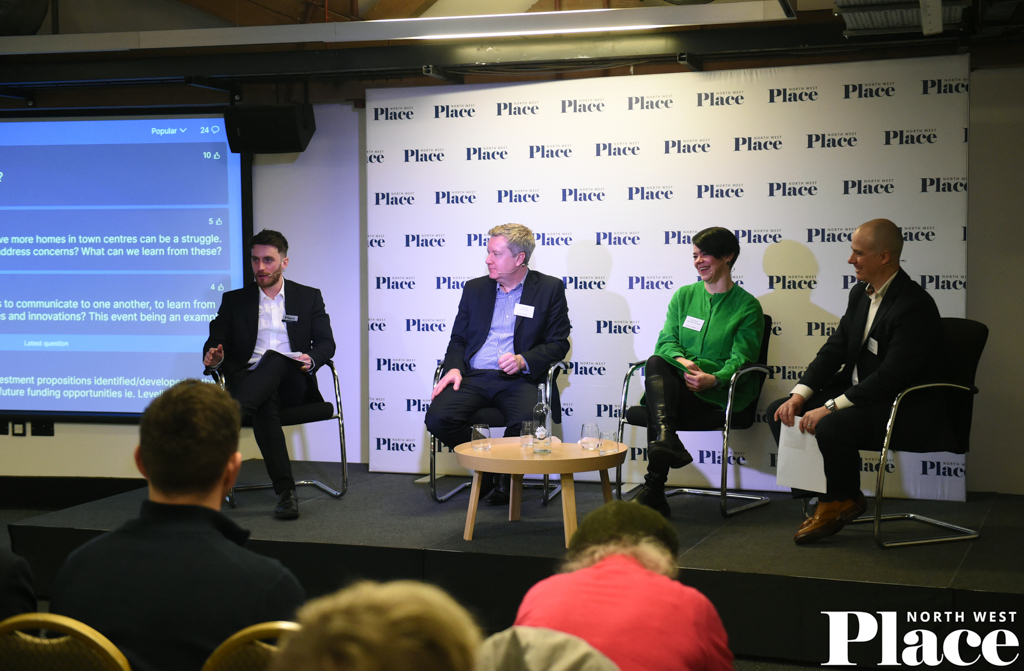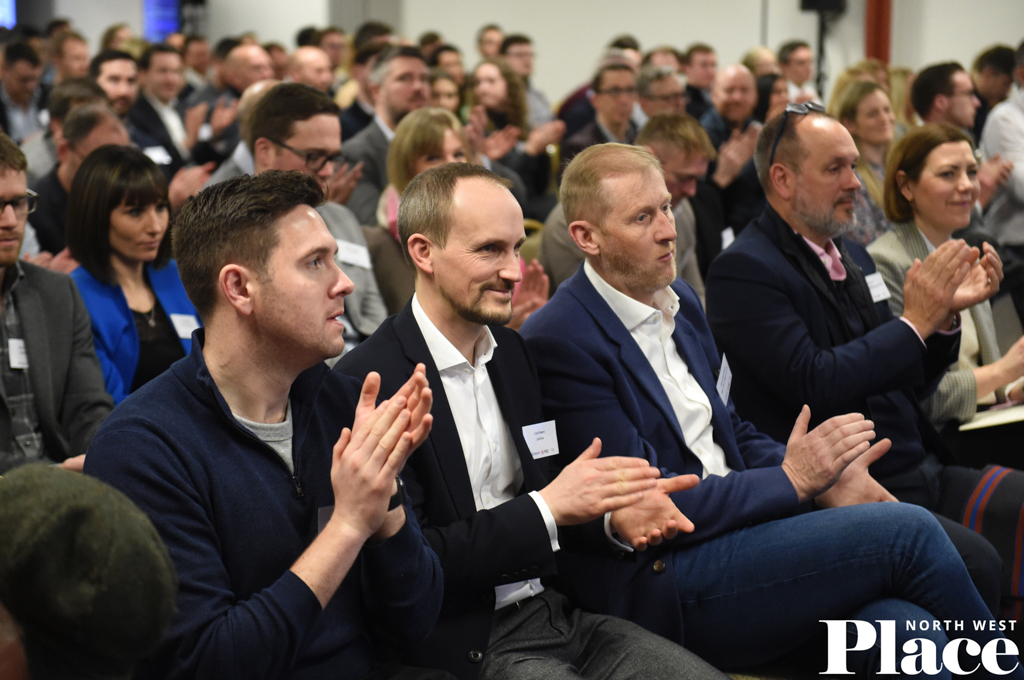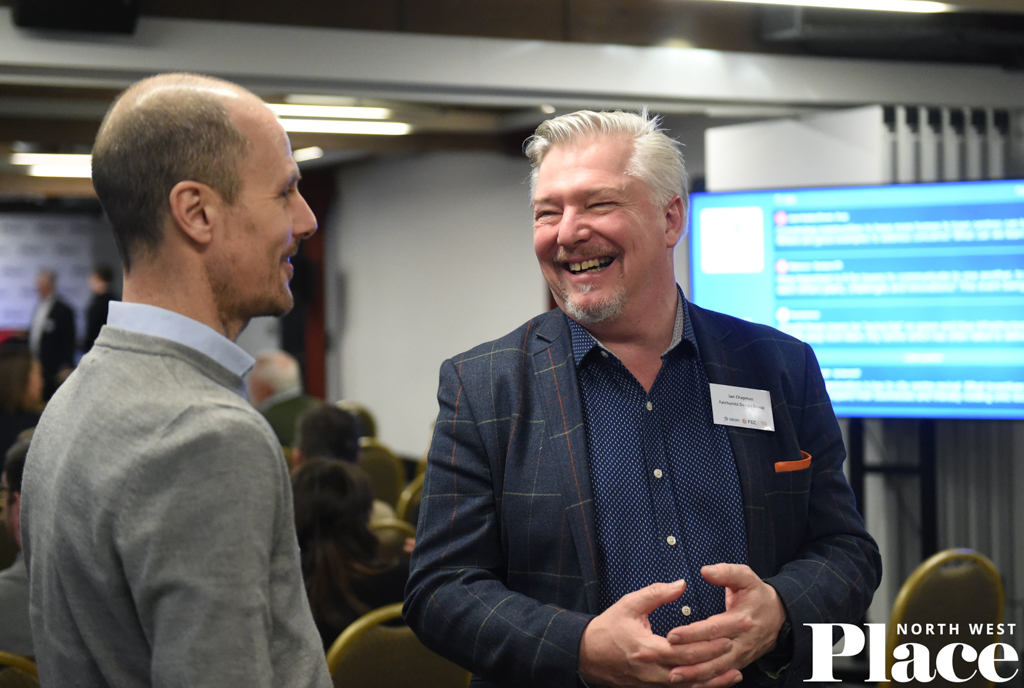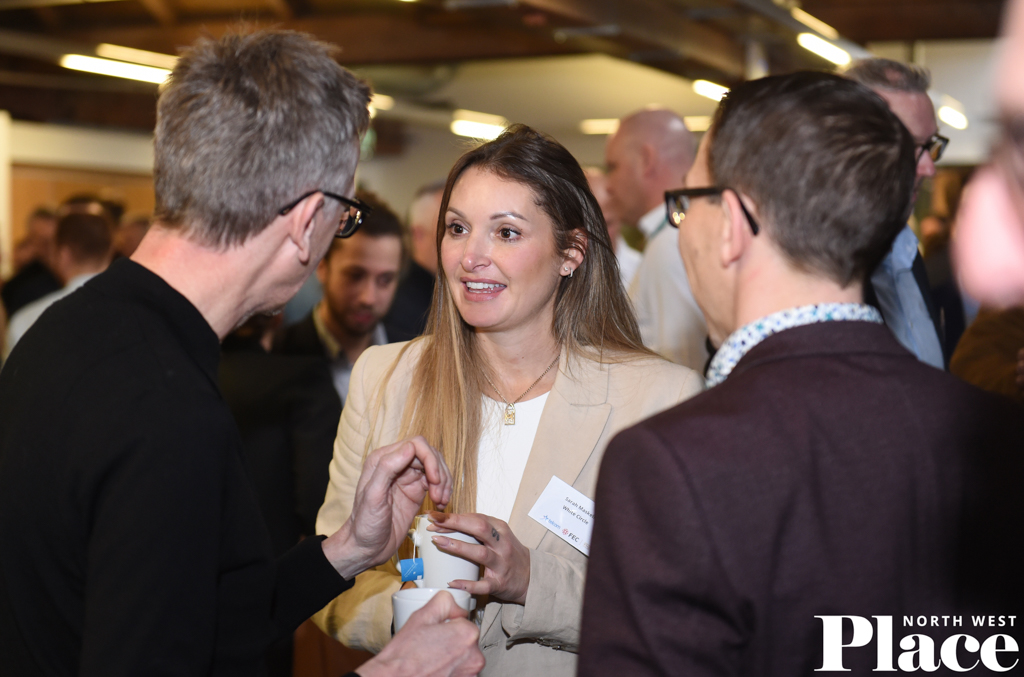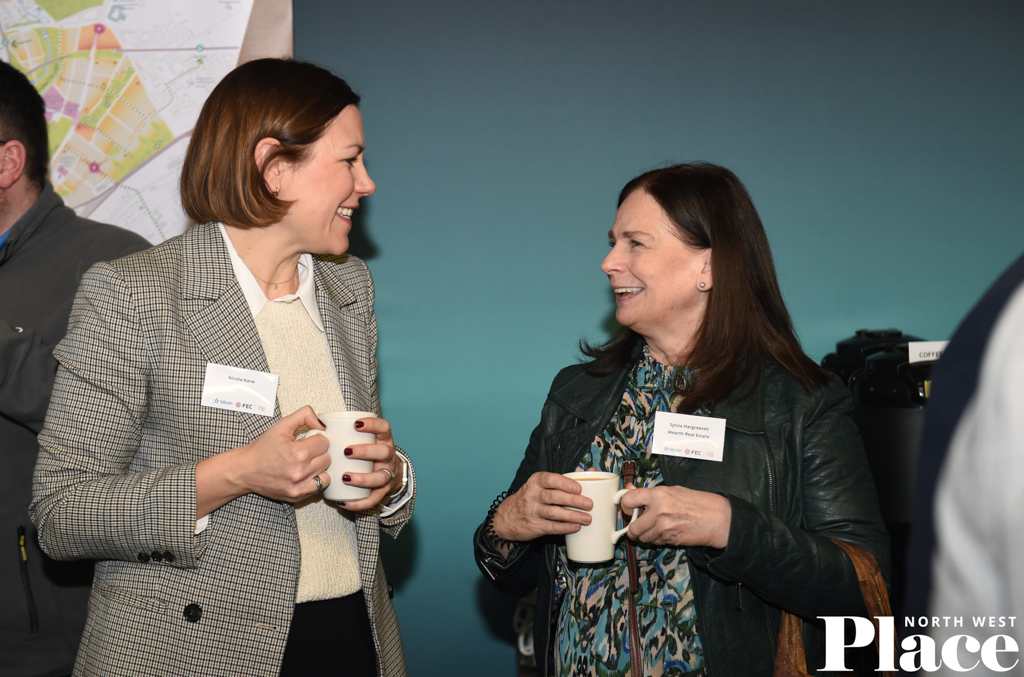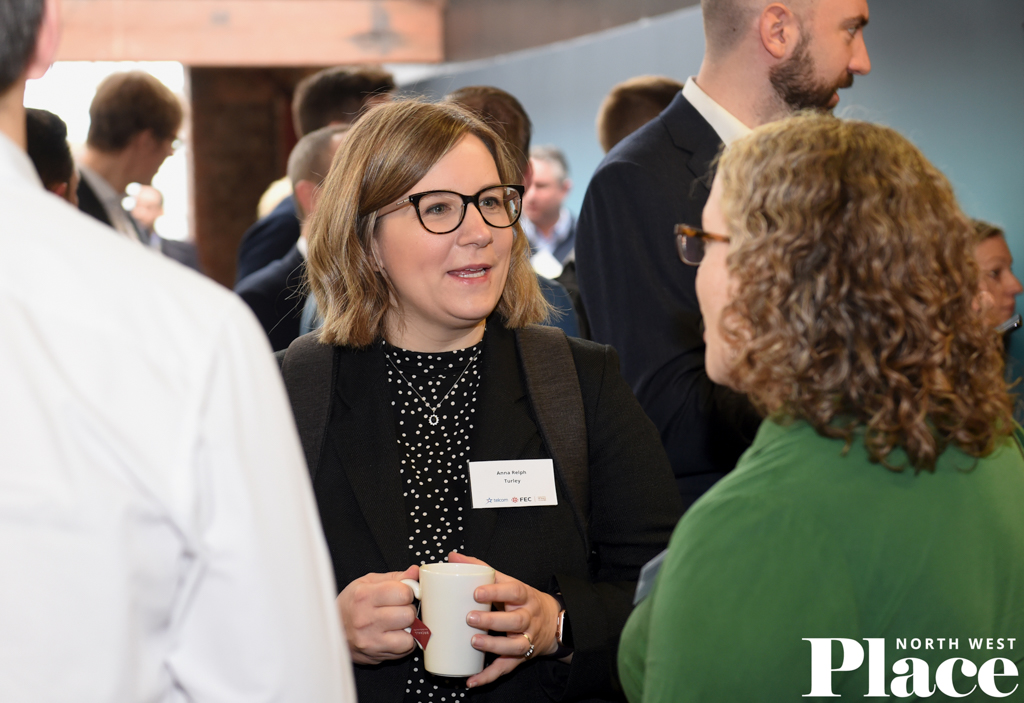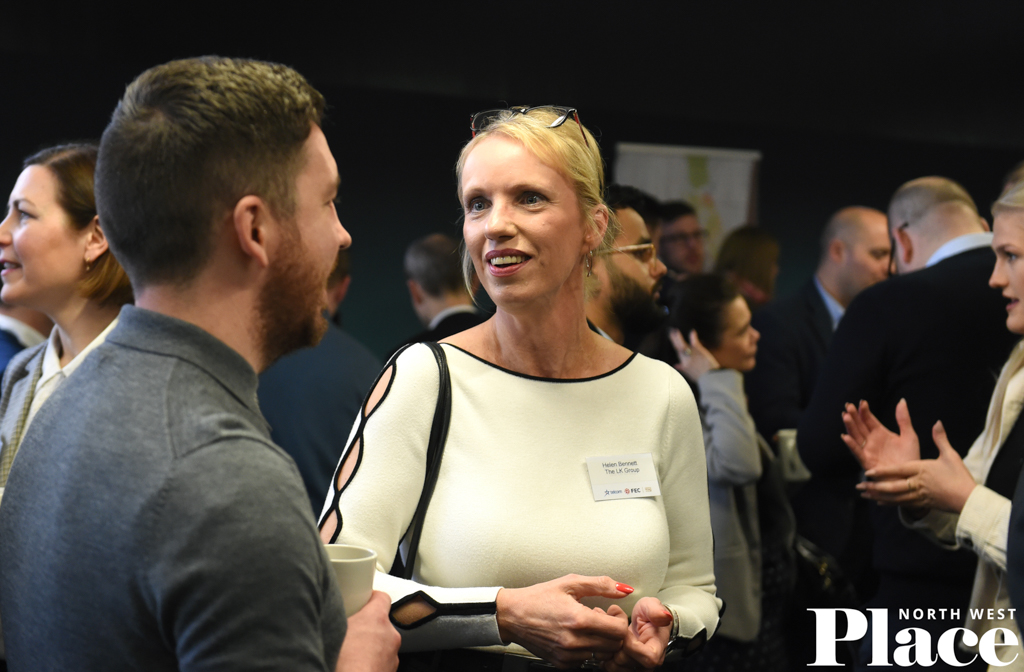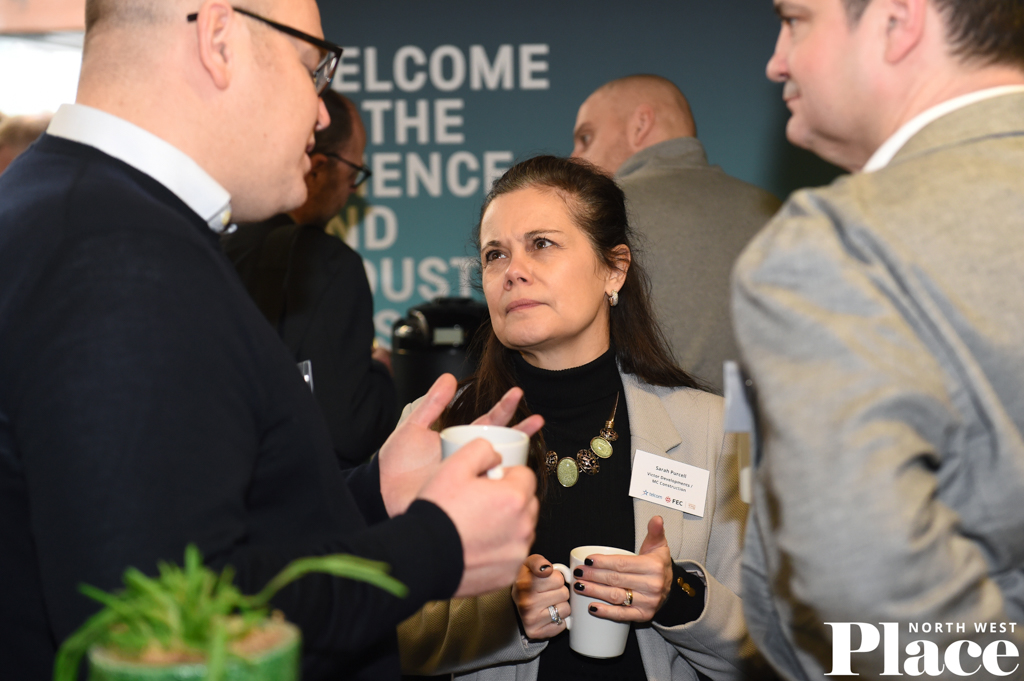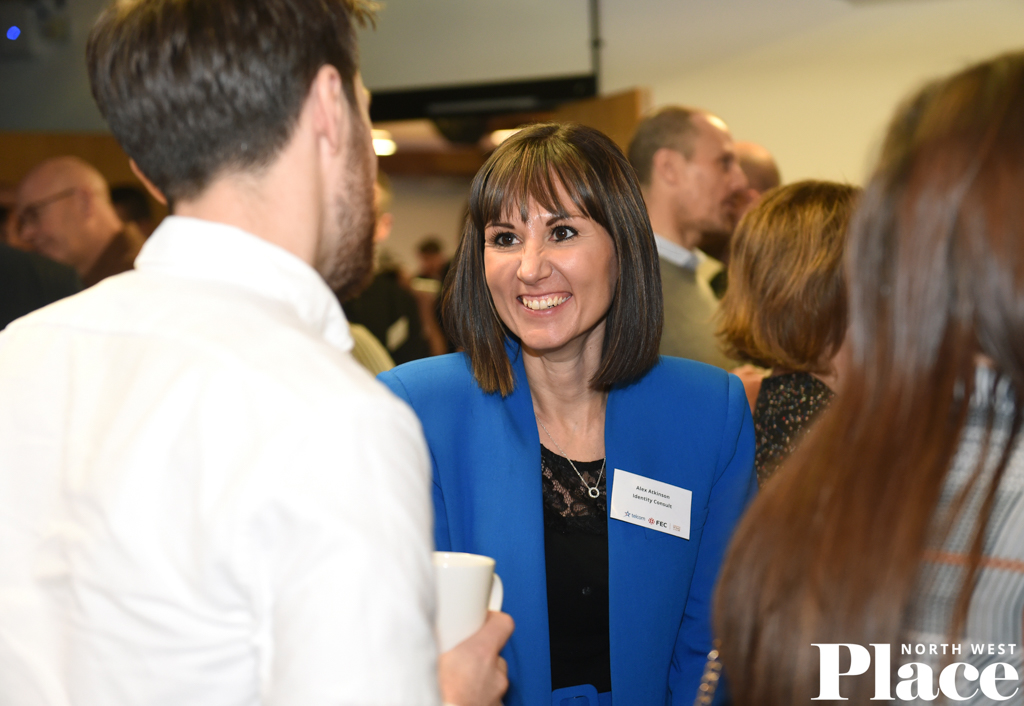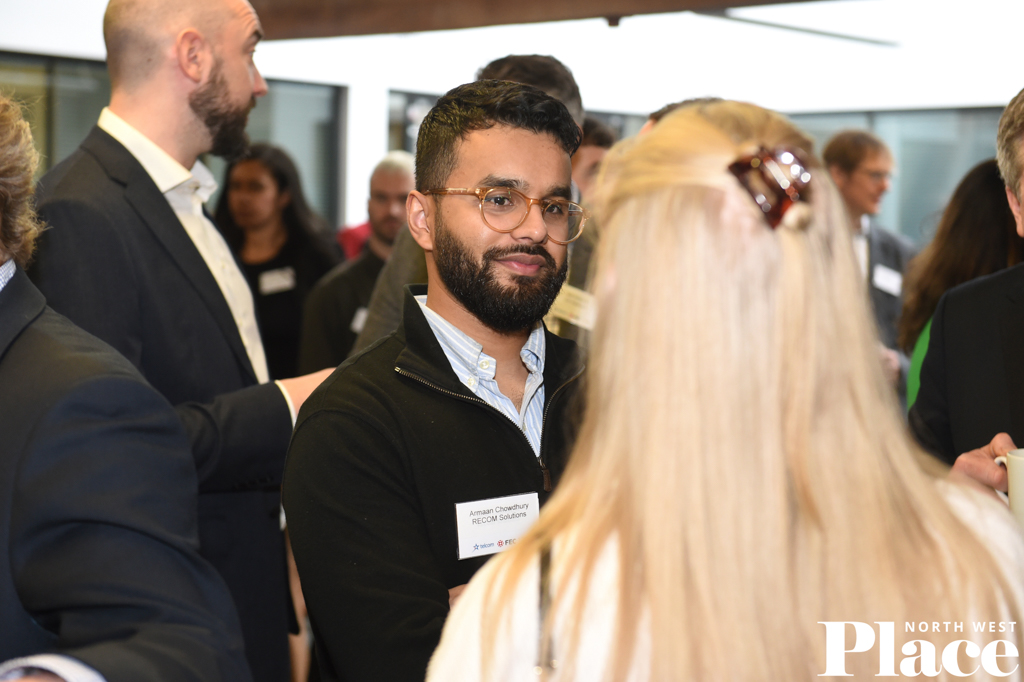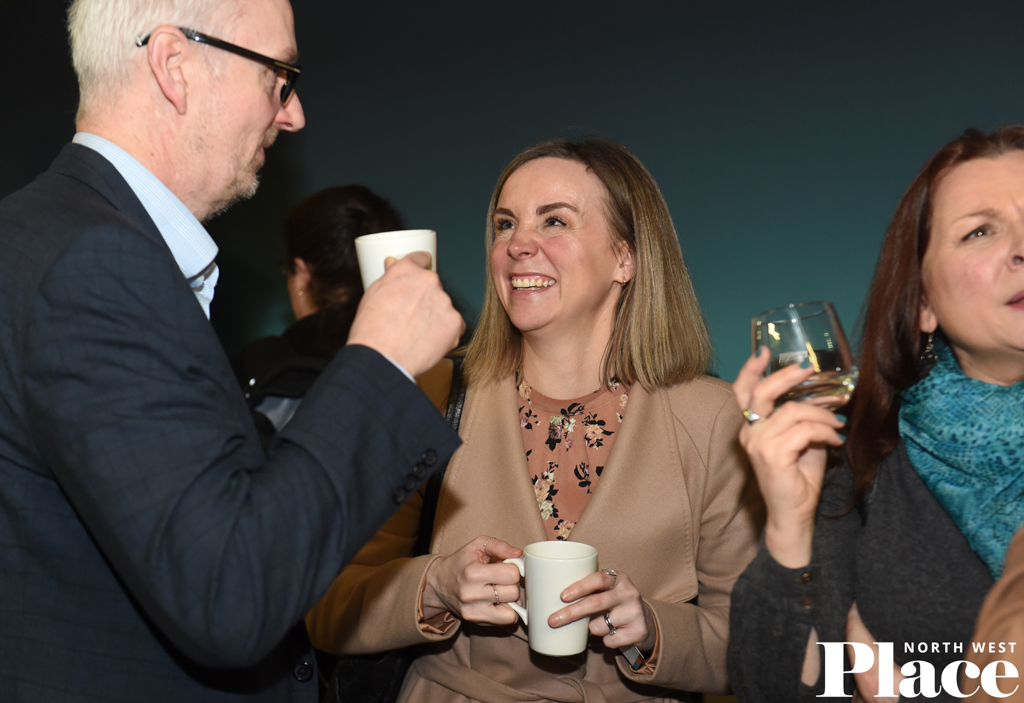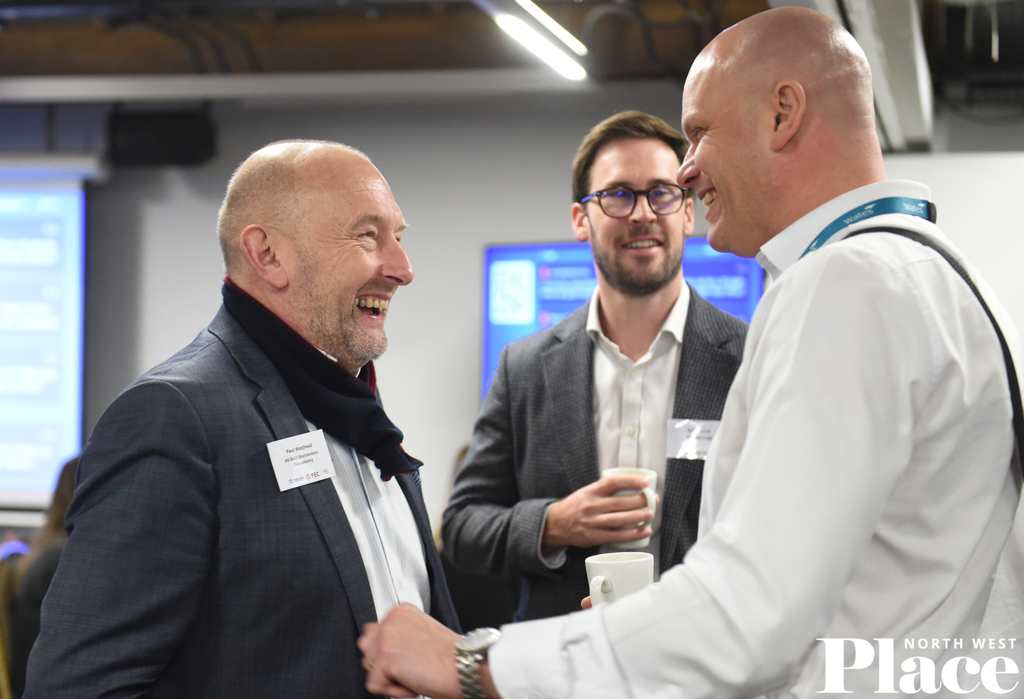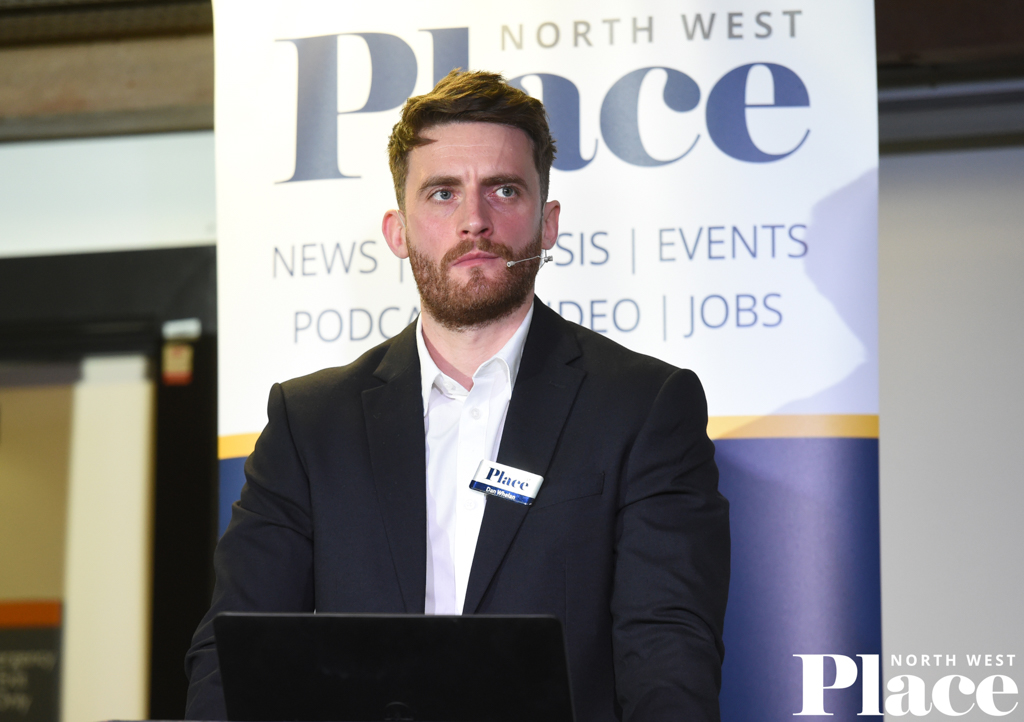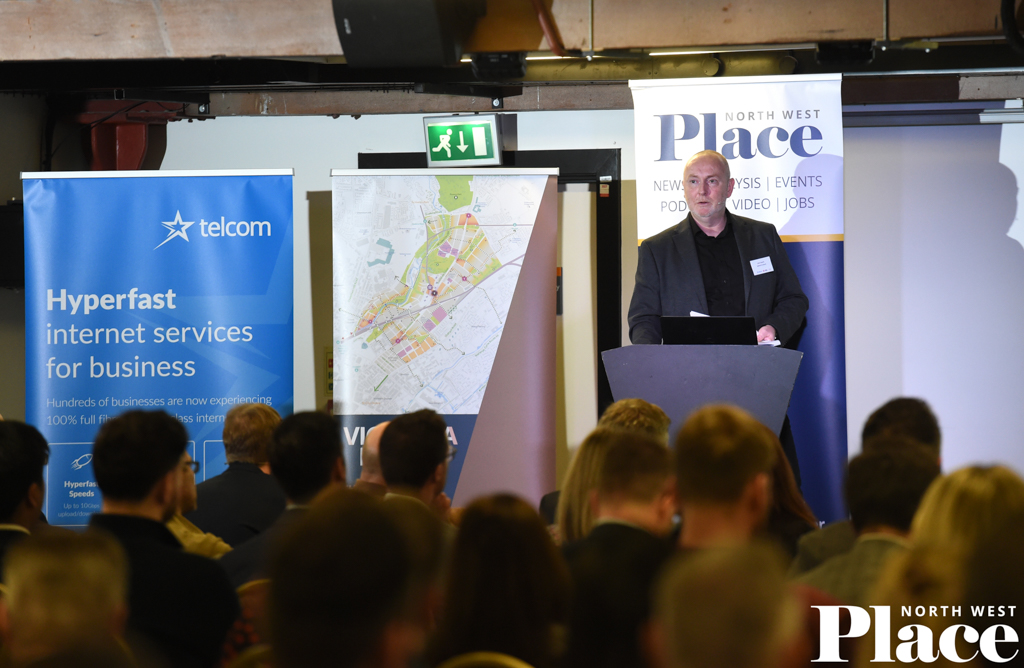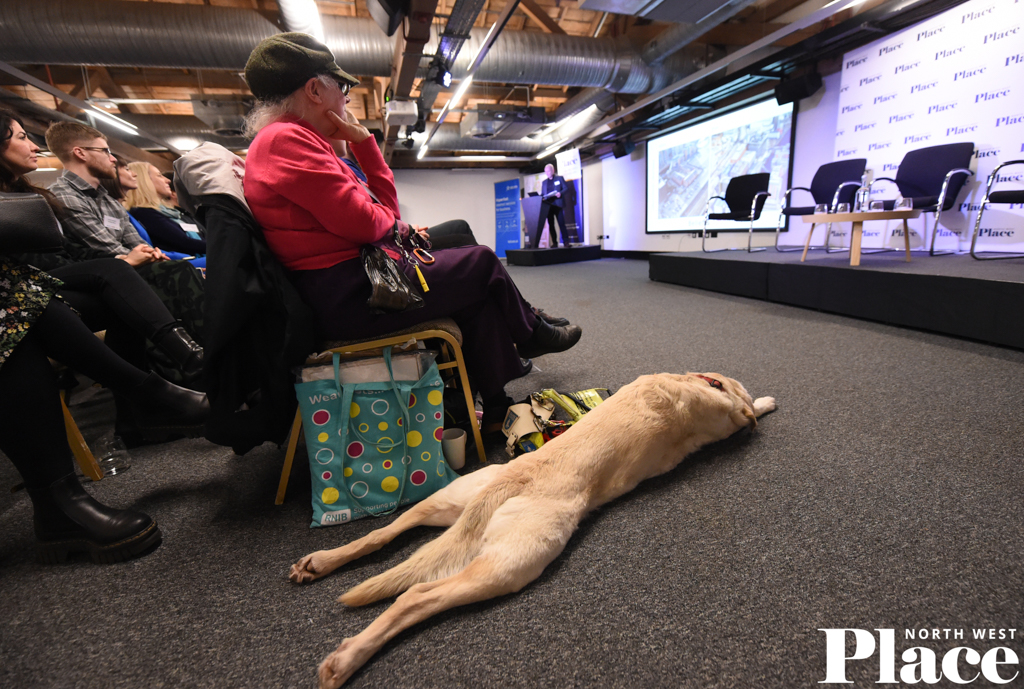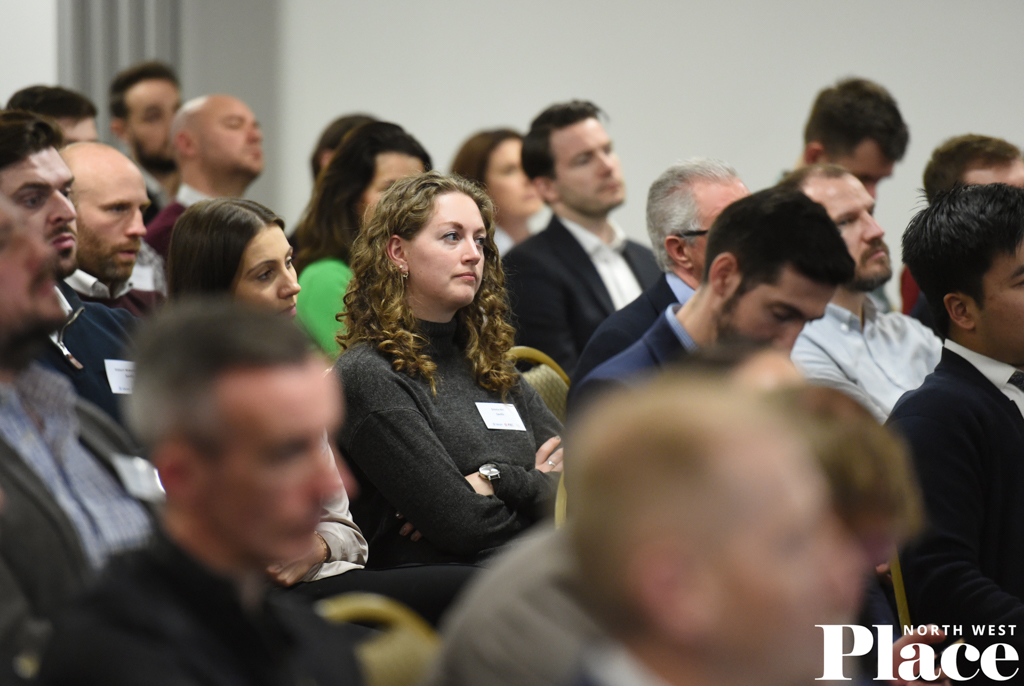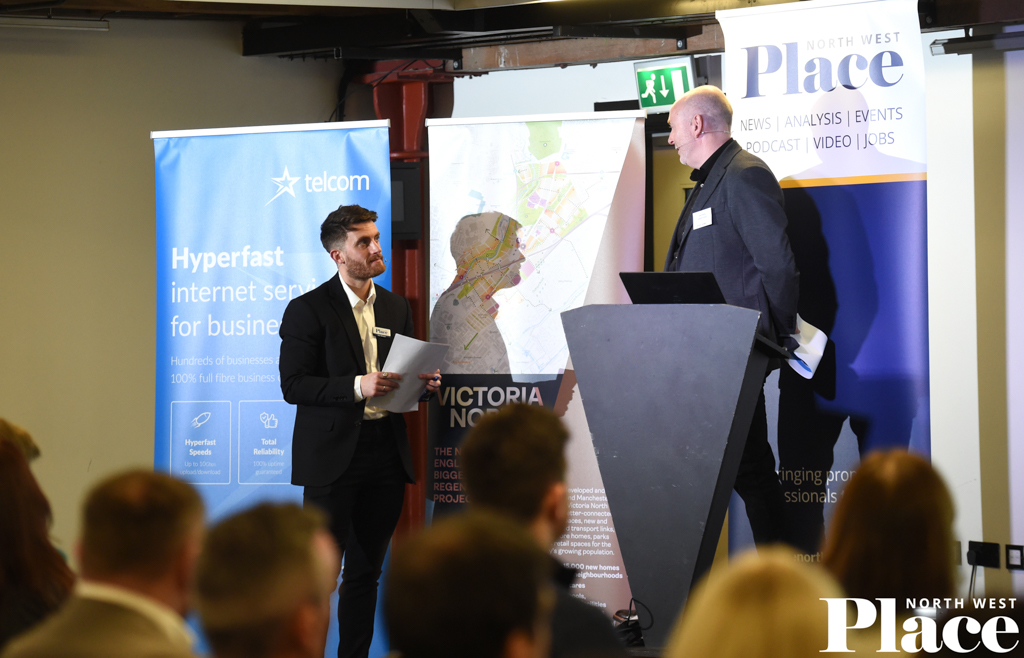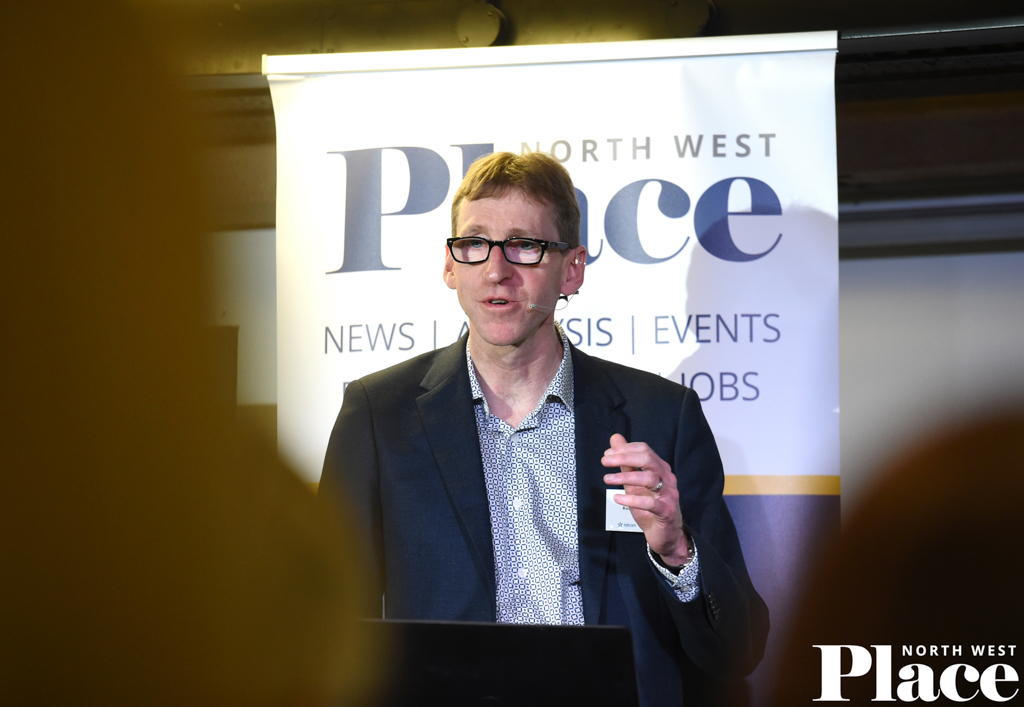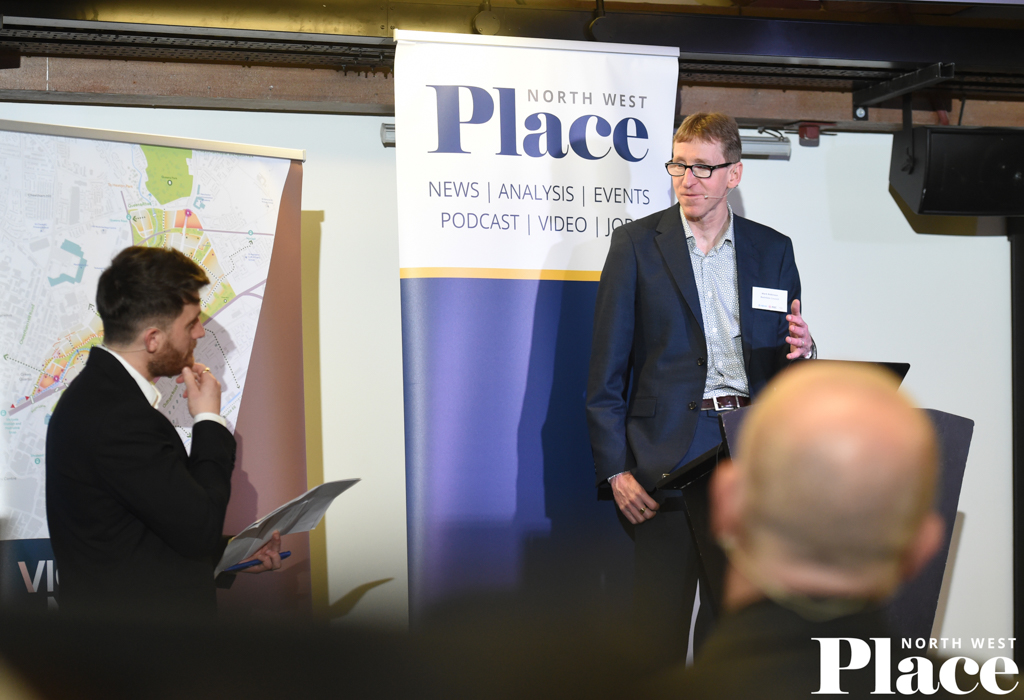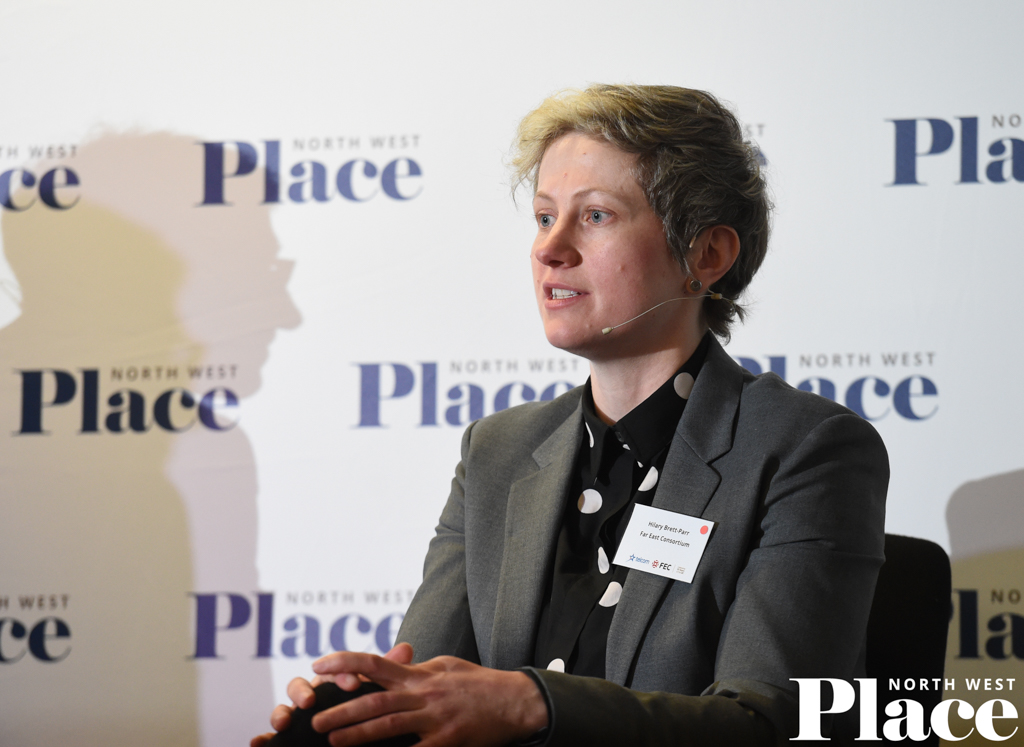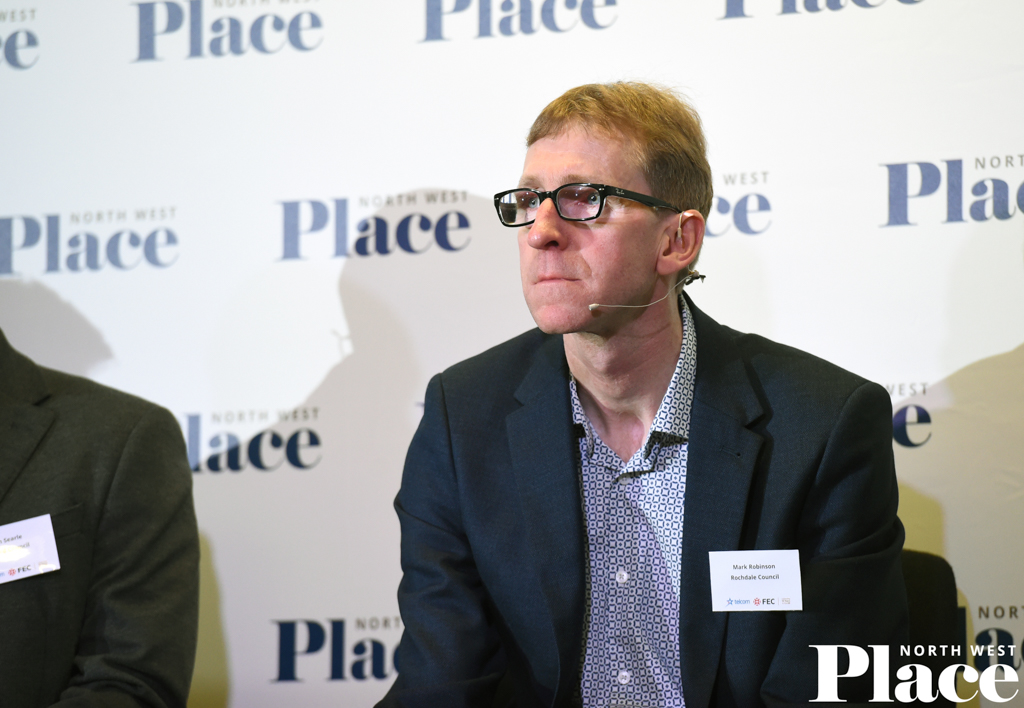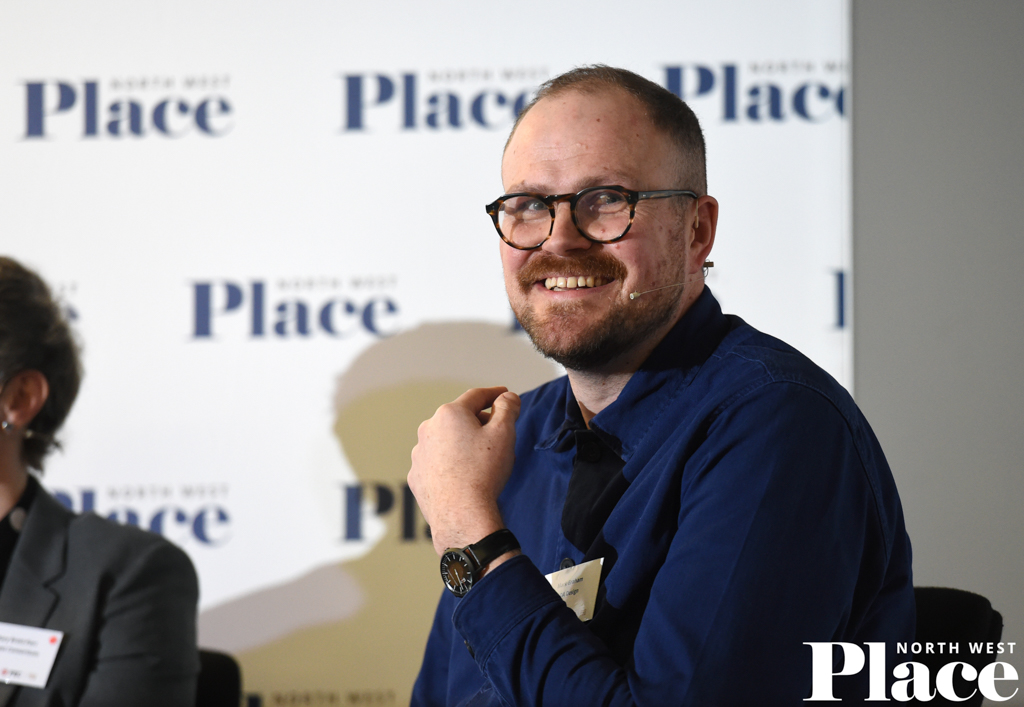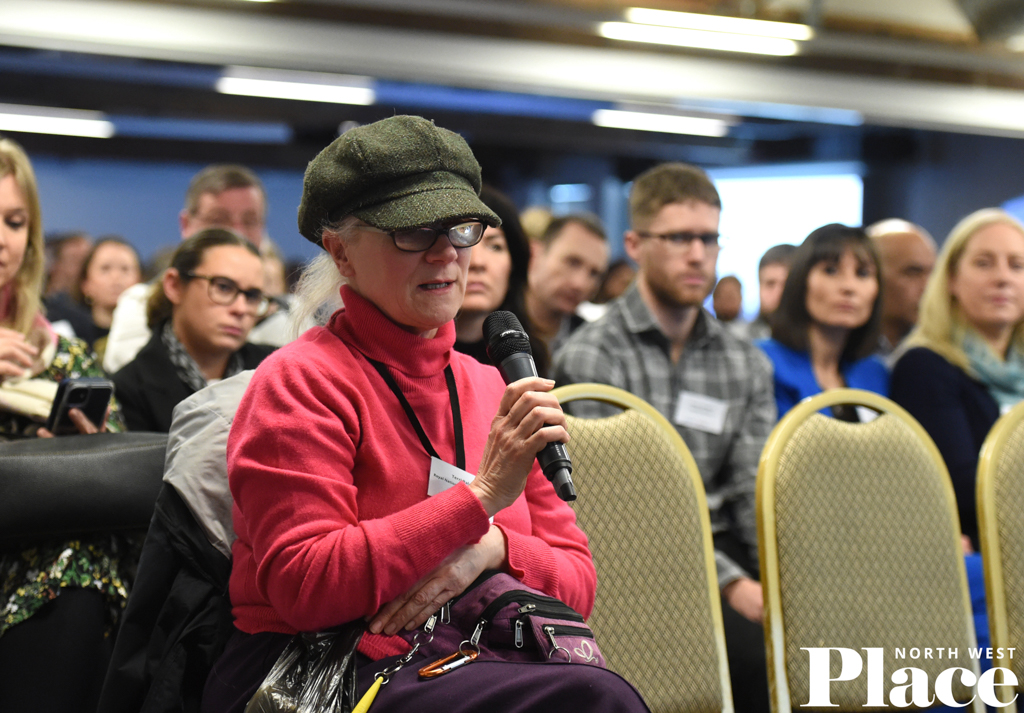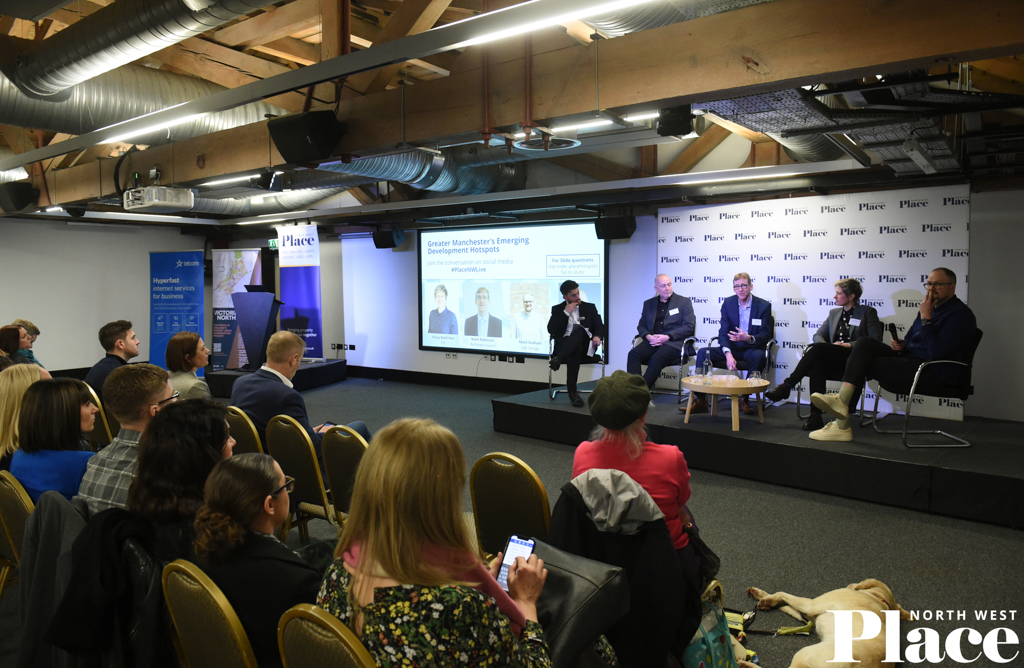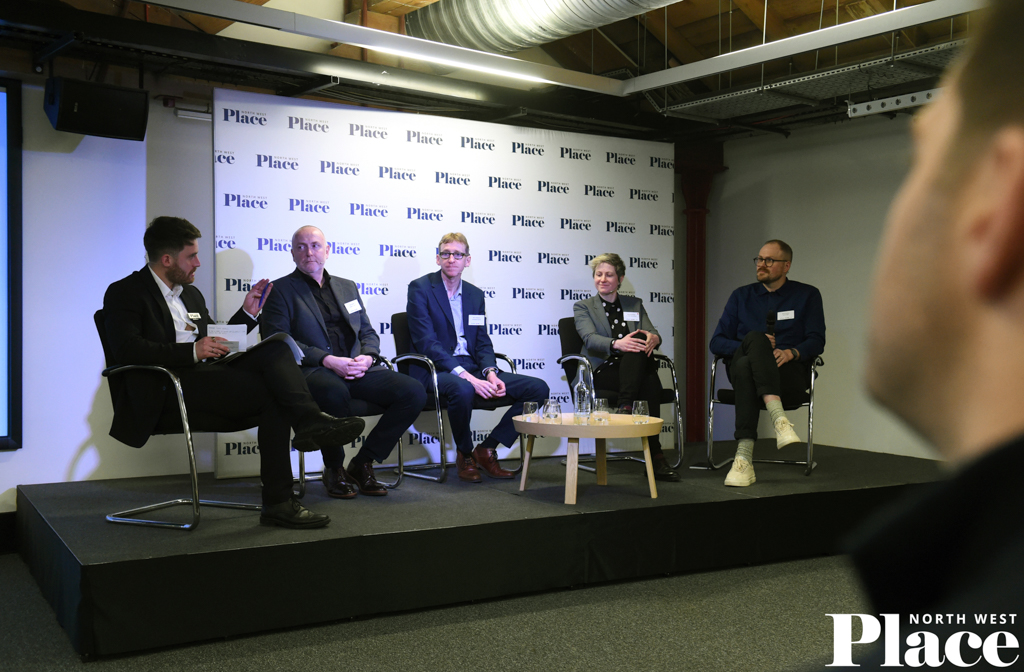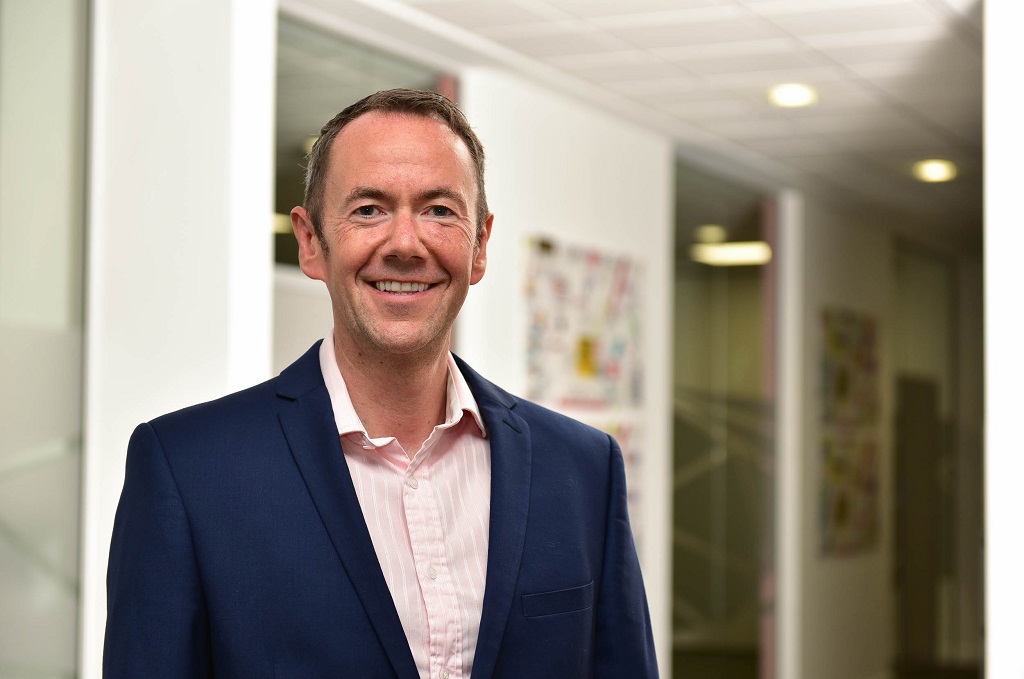Greater Manchester’s Emerging Development Hotspots | Photos and summary
Discovering Greater Manchester’s emerging development hotspots proved to be a huge attraction for the region’s industry professionals as they packed into the Science and Industry Museum for the biggest Place North West event since the pandemic.
Hosted by Dan Whelan, senior reporter at Place North West, the sponsors for the 16 February event were Telcom and Far East Consortium.
Scroll down to see photos and slides from the event.
How to heat up a hotspot
Simon Bedford, partner at Deloitte, was the first speaker. He was asked how a place could become a development hotspot.
He said some towns had to suffer false starts or took a long time to warm up, but added: “The biggest thing a town can do is have a really solid plan in place, and you’d be surprised how many don’t do that.
“You can’t lift and shift,” Bedford continued. “Everywhere is different.
“You have to get under the bonnet of what a place is about, why people live there and what they enjoy about living there.”
Bedford also discussed changing trends.
“Six, seven, eight years ago, nobody would have considered build-to-rent in a town centre,” he said.
“I’m also particularly excited about small businesses that choose to be in towns. Town centres are somewhere society can feel part of something and that’s what we try to achieve.”
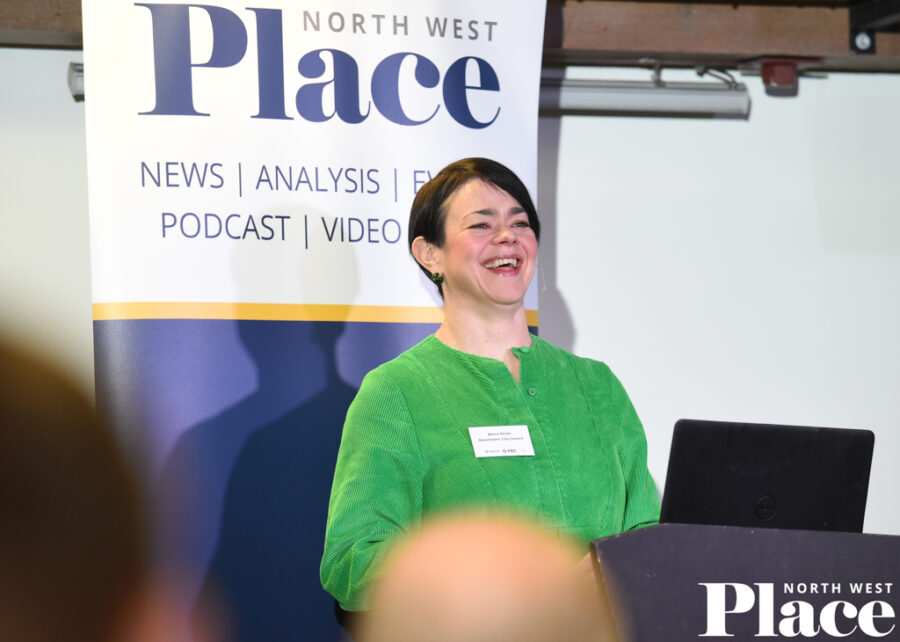
Manchester City Council’s Becca Heron focused her presentation on the opportunities Wythenshawe offers. Credit: PNW
Wythenshawe
Becca Heron, strategic director of growth and development at Manchester City Council, focused her presentation on Wythenshawe and began by listing its strengths: being well served by road links, proximity to the airport, and inclusion in the HS2 routes.
She then pinpointed the site, acquired by Manchester City Council, which was once called the Civic Centre. It is now called ‘Wythenshawe Civic’ after consultation revealed locals hated the older name.
Describing it as a “blank canvas”, she detailed how Wythenshawe Civic’s character was dated and unwelcoming, with no opportunity for an evening economy.
Heron outlined plans for diversification, including a container-style food hub, a creative centre in the former Co-op with performance spaces and studios, plus affordable office and co-working facilities.
Manchester City Council is also looking to convert the old Barclays building into a data centre, investing in public realm with tree-lined boulevards and consolidating parking and sustainable transport.
“Residential is a big component,” she added, discussing the wider surrounding areas.
“We have identified the potential for 1,500 new homes. The current offer is largely low-rise, low-density. Wythenshawe Civic will provide an alternative.”
Bury
Paul Lakin, executive director at Bury Council, presented plans to establish an enhanced residential offer in and around the Bury town centre.
Lakin described Bury as being a strong retail destination – the third most popular in Greater Manchester – with a mix of heritage assets. A CBRE-created masterplan will soon give people an opportunity to be closer to the cultural attractions.
“It won’t evolve away from retail but will blend other uses in,” Lakin said.
He listed several “big ticket” items, like how Bury Market had helped footfall in the town to recover to pre-Covid levels. The council’s £20m plans for a flexi-hall at Bury Market will create a multifunctional events venue which will boost the evening economy. An £81 million interchange scheme will turn a 1980s tram hub into a well-lit modern gateway into the town centre.
Then there’s the Mill Gate Shopping Centre, a 15-acre site acquired in a joint venture with Bruntwood, which will be the focus of public consultation in the coming months.
Lakin also outlined housing development opportunities: “We’ve got some target areas and one of them is affordable three-bed housing.
“We also have demand for large family homes in Bury,” he continued.
“There’s quite an elderly population in the north of the borough and it would be good to provide a better mix of specialist and older people’s homes to encourage them to move out of their larger homes.”
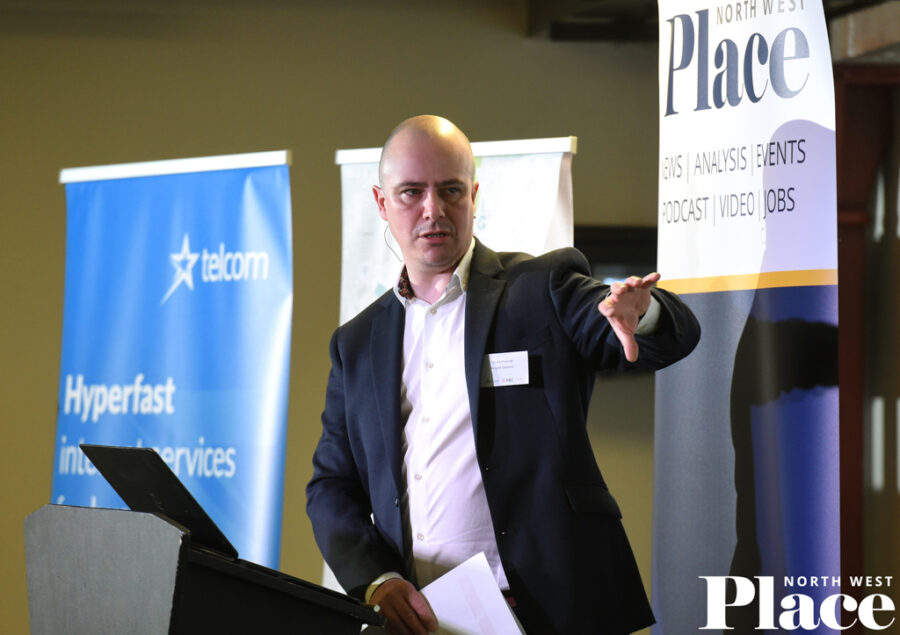
Wigan Council’s David Proctor described the authority’s dreams for Wigan Station Gateway. Credit: PNW
Wigan
David Proctor, assistant director for planning and regeneration at Wigan Council, was up next. He talked about the council’s ambitions for Wigan Station Gateway.
There are two Wigan stations, which are used by more than three million people each year. Of those three million, a third use Wigan Wallgate railway station to get into Manchester.
“The first opportunity is to reconfigure the fabric of the stations themselves,” Proctor said. “Part two is around the wider development. Within the environment of the station are six sites and we are looking at casting the net wider.”
He went on to discuss two potential options. The first would allow 550 homes, food and beverage offer, and relocating the multi-storey car park.
The second is more mixed-use, with 280 to 300 homes, 20,000 square metres of commercial floor space, and a car park.
Putting it in a wider context, Proctor said this strategy was part of the Wigan & Bolton Growth Corridor, which will create 12,000 homes (including a town centre residential offer) and significant employment, particularly around manufacturing and logistics.
He added: “It’s about building success, creating the next cycle of investment and development opportunities.”
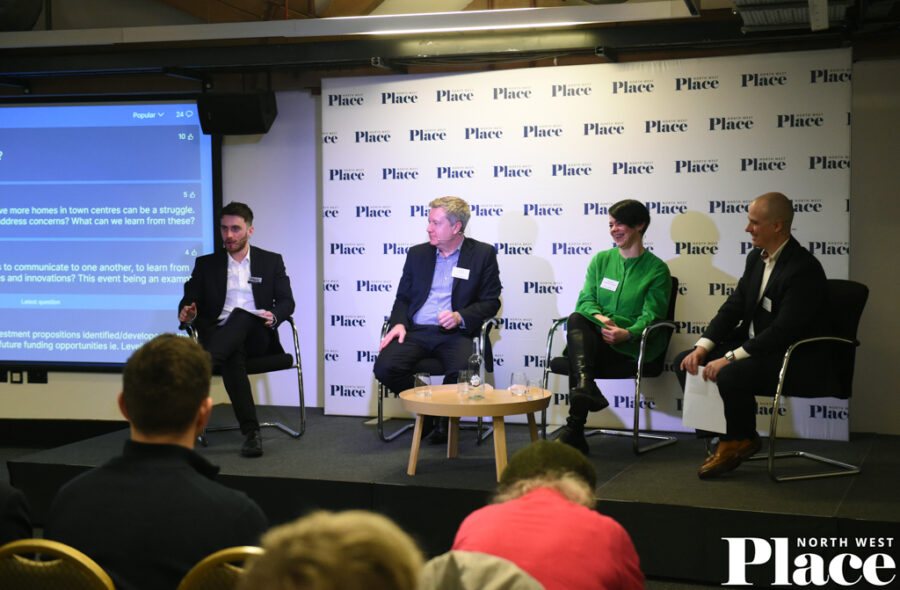
From left: Place North West’s Dan Whelan, Bury’s Paul Lakin, Manchester’s Becca Heron, and Wigan’s David Proctor. Credit: PNW
Talking about regeneration
The first panel discussion brought together Heron, Lakin and Proctor.
Much of the conversation explored how much regeneration strategy and planning is about need, and how much is opportunistic.
“A clear plan is essential, looking at drivers, assets and opportunity,” Manchester’s Heron said.
“Land assembly is a real challenge,” she continued. “We look at where intervention is required but there is always an element of ‘what can we do’ based on the land we’ve got. Land isn’t the only thing but it is really key.”
Bury’s Lakin said: “A lot of priorities are pretty fiscal for local government. We need to reduce our operating costs and therefore if we can free up estate we don’t need we can generate benefit from that.
“But the tide comes in and out on certain types of uses and there needs to be flexibility in the way uses come about over the life of a masterplan,” he said.
“If you lock in a single use that doesn’t really work you are left with something that doesn’t generate the economic or social benefits you want.”
Wigan’s Proctor added: “What are the opportunities? It’s sustainable communities, getting diversity of use and getting that footfall at different times of the day and night.
“Understanding what the opportunities are for town centre residential is not just one single thing,” he continued. “There are different models. That diversity is going to be the thing that gives it longevity.”
Heron brought up public funding and said: “All the authorities have moved a long way in developing their pipeline.
“Some of that has come from the approach to funding by the government,” she said. “I’m not a fan of relentless bidding for small pots of money but the way levelling up funding was set up, I think, has encouraged local authorities to look at different parts of their borough.
But she added: “Success depends on the collective success of the region as a whole.”
Eccles
John Searle, strategic director of place at Salford City Council, focused on Eccles in his presentation. He was keen to put the town in the context of the city, where the authority has set itself a challenge to build 40,000 homes and create 40,000 jobs by 2040.
The city council is already ahead of that schedule and Searle says that’s made their ambition even bigger.
He said Eccles is extremely well connected, highlighting its nine-minute train journey into Victoria. Searle detailed three themes the city council has created for its plans for the town: ‘our place to eat, meet and play’, ‘strong roots with exciting green shoots’, and ‘creating new connections’.
Despite the city council’s acquisition of Eccles Shopping Centre in December, Searle emphasised that the future of town centres is not about retail – saying that the town’s housing mix and green space presented a massive opportunity, which was residential-led but definitely mixed-use. He also said Eccles was better than a 15-minute neighbourhood, describing it as “a five-minute neighbourhood”.
That’s due in part to Eccles’ great transport links with the M62, main roads and train links, he said.
“You can even get a boat to the town centre!” Searle added.
Further regeneration of Eccles is going to happen in partnership, according to Searle.
“We absolutely want to be working with the private sector to handle this,” he said. “We will develop a joint masterplan.”
The city council is already working with SimpsonHaugh on early-stage visualisations of the regeneration effort for Eccles.
Heywood
Mark Robinson, director of economy at Rochdale Council, chose Heywood as the focus of his presentation, explaining its growth plan for 2022 to 2030.
He said it was part of Manchester’s Atom Valley mayoral development zone, with its greener, fairer and more prosperous aim.
“This is the biggest growth opportunity in Greater Manchester and, for the first time, it’s north of Greater Manchester,” Robinson said.
He did highlight one big negative: Heywood’s Northern Gateway site is only five miles from Manchester city centre and there isn’t a bus service linking the two.
“It is really poorly served by public transport,” he admitted, “but there is a real opportunity to rebalance the economy in GM.”
One successful transport initiative that has been completed is the Junction 19 link road from the M62.
“This has removed traffic from urban areas and given the opportunity to have a fresh look at the town centre,” Robinson said. “There’s a journey time saving and benefits for business and the improvements it’s allowed us to make in the town of Heywood.”
He discussed the HPARK project and the South Heywood masterplan with its 400 units of housing, 1.5m square feet of new employment space, new local centre, sports village and 20,000 sq ft of retail, with £1m funding secured to tackle local highway junctions.
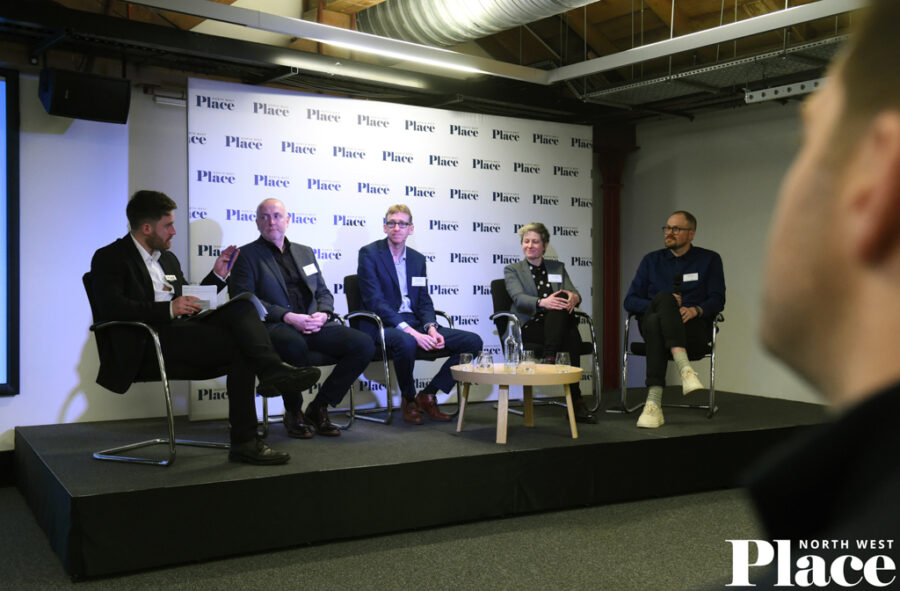
From left: Place North West’s Dan Whelan, Salford’s John Searle, Rochdale’s Mark Robinson, FEC’s Hilary Brett-Parr, and LDA Design’s Mark Graham. Credit: PNW
Regeneration in practice
The final panel included both Searle and Robinson, with the addition of Hilary Brett-Parr, project director for FEC, and Mark Graham, director of LDA Design planning consultancy.
Brett-Parr gave an update on the Victoria North project in Manchester where a planning application is nearly ready for another 1,550 homes in the Red Bank neighbourhood. She said they had been working on the initiative for five and a half years and the assembly of land was pushing forward:
“There’s a lot going on and more to come,” she said.
Graham was asked about the importance of having a good regeneration plan. He said: “We’ve touched on the importance of a vision, identity and the differentiation between places, and the importance of research that feeds into that – getting in there early and spending time having conversations.
“Having that strong vision that’s informed by distinctive aspects of place means you are driving forward to deliver something that meets the aspirations and gets that level of ambition right is really important,” he said.
Whelan asked if convincing communities they needed more town centre homes was a struggle.
Brett-Parr said: “Different neighbourhoods have different challenges and opportunities. Look at it as place-shaping with communities who have the history, rather than creating something new. You need to make sure everyone comes on the journey.”
Salford’s Searle said: “Town centres became fashion-dominated retail and that’s already changed.”
Rochdale’s Robinson said shared innovation between authorities was a good thing.
“We are in touch with our neighbours and are keen to learn from what’s going on elsewhere,” he said.
A question from the floor came from Terri Balon of the RNIB. She raised problems during public consultation for those with sight issues. Searle said this was definitely a consideration but acknowledged it wasn’t always good enough. Robinson said the accessibility issue was something everyone could take away with them.
Slides
What’s next?
Keen to learn more about local authorities’ plans for development? Want tips on how to secure public sector contracts? Place North West’s Meet the Authorities: public-private partnerships conference will be held on 30 March in Manchester.
Click on any image to launch the gallery


